

10 Inspiring Lessons We Can Learn from Natural Disaster
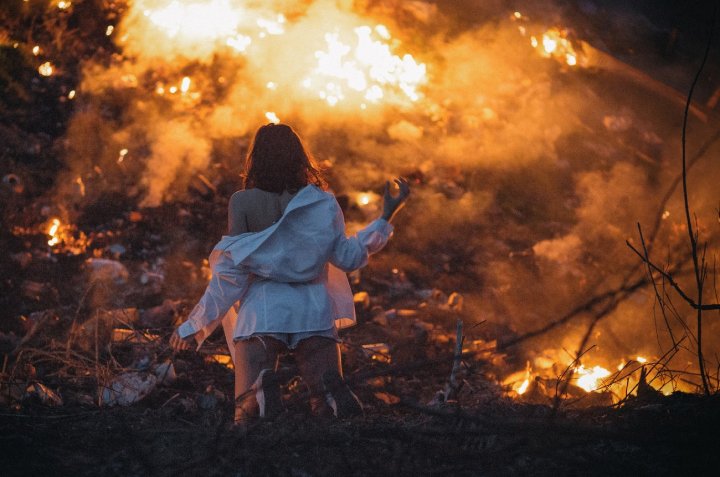
Natural disasters occur in a fallen world, which may claim thousands of lives or destroyed or damaged millions of homes . And also we can not do anything to avoid them, yet we can minimize their effects.
Although some of us still sing the songs of grief and loss, others have tried to find a peaceful refuge, built on the memories from that tragic day.
What can we learn from disasters? Read on.
1. Prayers can be comforting – even for nonbelievers. It’s so easy not to believe in a GOD until faith becomes your only hope. We’re all just humans and seeking the divine has been one of the ways that can give us the strength to carry on and survive the strongest storms.
Believer or nonbeliever, we all need that light in the dark in a form of a sincere prayer to make all the fears go away. We all deserve that glimmer of hope that only comes when we become humble and admit that we can’t be always in control.
2. Sometimes, there are no real answers. “Why?” This is the biggest question that has remained unanswered in the aftermath of a disaster. Everyone has lost something and someone, and they kept on asking what they’ve done to deserve this cruel fate. Some people even spend years trying to look for answers only to find themselves at a dead end.
It’s okay to hold on to these questions but don’t let them trap you in an unending cycle of anguish. No matter how hard and painful it is to take the first step, it’s important that you keep moving, breathing and living. You’ll find your way someday.
3. Even strangers can teach you kindness. Some philosophers think that human beings are naturally selfish with an instinctive tendency to prioritize their own comfort and safety – even if it means hurting and depriving others of their rights as a person.
There may be millions of people like those in the world but it’s not a reason to lose hope in humanity. There is still kindness out there, waiting to be discovered. You’ll find them everywhere, at the most unexpected places – even among the wastelands left by the disaster.
4. Family is everything. Life can be unfair sometimes but everything is bearable, as long as you’re with the ones who have genuinely loved you for who you are since the day you were born.
However, sometimes we forget to love these very special people, our family, just because we’re too busy with our own lives. At times, we take them for granted because we think that they’ll always be there, waiting for us to finally find the time – until we arrive at an empty house, an abandoned and forgotten place that you once called “home”.
5. Your money won’t matter in the end. Most people worship money because of the comfort and advantages that it can give its bearer. While it’s an essential tool to survive this material world, it will not and cannot save you from death.
At the end of the day, what will matter is how much you loved, how you lived and how you helped make the world a kinder place for others.
6. Death is a reminder to appreciate life. You don’t have to fear death if you know that you’re living your life to the fullest, a life according to your own dreams and aspirations; a life of happiness and contentment shared with the people you love.
Death may end your physical existence but the memories of your deeds, your love and passion will be remembered for all eternity.
7. You have to help yourself first before you can help others. You can’t save someone’s life without giving the same kindness to yourself. It’s not selfish to seek a better life and become a better person first before you can start helping others to do the same. You cannot pour water into someone else’s cup if yours is still empty.
If you want to help change lives, work hard for a passion, a dream or an ambition that is enough to lift others up. Inspire them to follow your path and remind them to give back. Spread this love and make this world a better place.
8. Every day of your life should be spent loving and living. Don’t waste your life feeling bad about every wrong decision you made; don’t be angry at the world for letting you live an unbearable life of heartbreaks and frustrations, and don’t curse at the heavens for not giving you what you want.
Life is too short and too precious to linger in all its flaws. Rather, love deep and love hard. Live as if it’s your only chance to find the happiness that you deserve. Celebrate friendship, drown in romance and get drunk in the intoxicating scent of love. Just live.
9. You shouldn’t be a victim forever – be a survivor. Sure, reality can be harsh and unforgiving but it doesn’t mean that we should blame ourselves and feel like a victim forever. We have to strive and thrive; we have to fight and do whatever it takes to resist and rise up – because we’re not living in a fantasy world, we’re not characters out of a book. We’re human beings and we know too well that the realities that we have today won’t be perfect. Not everyone will have a happy ending nor an interesting plot, but we can always decide how to write the ending.
Don’t be a helpless and vulnerable victim; be a triumphant and unyielding survivor.
10. It will always be Humanity against the World in the end. So we should all love and take care of each other regardless of faith, gender, race, social status, and even political views. The end of the world won’t be kinder to anyone who refuses to believe in someone’s religion nor to someone who thinks he’s more superior, or richer, or “straighter”.
At the end of it all, we have to fight the same battle and overthrow the same enemy as a people, as brothers and sisters, as friends, and as comrades in life.
ALSO READ: 45 Inspiring Quotes about Life
Books recommended for you.

* As an Amazon Associate I earn from qualifying purchases.

- ENVIRONMENT
What a shrinking sea might teach us on life after environmental disaster
Sixty years ago, the Aral Sea began drying up, leaving salty, barren soil in its wake. Lessons learned here will help other parts of the world experiencing climate change.
These days, the village of Karauzyak in western Uzbekistan is a dusty place. Surrounded by an arid landscape of dry scrub grasses and salt-crusted soils, it’s hard to believe the village was once along the banks of a swollen river, 30 miles from the shore of the world’s fourth-largest lake. Over the last 50 years, that lake, the Aral Sea, has dried up almost entirely, in what is often called the “world’s worst environmental disaster.” Now, it’s hard to farm much of anything in Karauzyak—except for atriplex, or saltbush.
In a 3.5-hectare plot of land near the village, a team of Japanese researchers is growing this salt-loving plant, known scientifically as a halophyte, to see if it can be a viable crop for farmers in the region and even nurture a small dairy industry. They’ve fed it to cows at a nearby farm and found that it helps lock scarce moisture into the thirsty soil, and it can be grown without extensive fertilizer use.
As she holds up a dusty green twig of atriplex, Kristina Toderich, a halophyte expert from Tottori University in Japan, explains why the salt-loving plant excites scientists like her: “This doesn’t need water. It doesn’t need anything.”
Toderich is one of the lead researchers on a project using the former seabed and nearby river delta as a living laboratory. It’s part of a larger Japanese foreign aid and scientific collaboration initiative called SATREPS. Working with Uzbekistan’s hydrometeorological service, UZGIP, the researchers are collecting real-time climate data and satellite imagery to better understand the conditions in the Aral Sea area: how much water is left, how fast it’s disappearing, and what kind of crops are being farmed there.
Based on the results, they’re drafting a model for sustainable agriculture in the region, recommending that farmers adopt new irrigation methods and plant crops that are more salt- and drought-tolerant, says Kenji Tanaka, a hydrologist who studies the effects of climate change on water resources and the head of the SATREPS project.
“Which areas are dry? Which areas have enough water?” By answering these questions, Tanaka said, “we can distribute the water actually where they need it.”

Their ultimate goal is to revitalize a region that has been devastated by intensive agriculture.
For Hungry Minds
These environmental changes are not unique to the Aral Sea.
The United Nations Convention to Combat Desertification has warned that an area of land the size of Central Asia has become degraded from drought, salinization, and overuse since 2015. By learning what can grow in the Aral Sea, SATREPS could provide solutions for other parts of the world that are facing similar problems, from the Lake Chad basin in Western Africa to the Great Salt Lake in Utah.
You May Also Like

Your favorite foods may not taste the same in the future. Here's why.

Climate change is hitting the heart of Cajun country—through its crawfish

Wildfires are making their way east—where they could be much deadlier
Why the aral sea dried up.
Starting in the 1960s, Soviet officials diverted rivers flowing into the Aral Sea to produce cotton in nearby fields. Without rivers regularly replenishing the sea, the large lake began to evaporate, water levels plummeted, and the retreating sea left behind increasingly saline soil where regular crops could not grow. Today, cotton farming continues in an arid region that receives an average of just four inches of rain per year.
It's unclear whether the Uzbeki government will adopt the recommendations made by the SATREPS team. But so far, the country seems open to change; President Shavkat Mirziyoyev, who promised to loosen the rigid Soviet-era policies of his predecessor, Islam Karimov, ended the requirement that all Uzbek citizens pick cotton if called upon, and has spoken at the United Nations about the effects of desertification and land degradation on his country.
Climate change makes these adaptations even more urgent. Average temperatures in the Aral basin have increased by around 3.6 degrees Fahrenheit since 1968. And the shrinking of the Aral Sea itself has affected the climate; as the water disappeared, the air became drier and lost the cooling effect of the nearby lake, creating a feedback loop that resulted in hotter and drier weather. Sandstorms now spread dust and toxic heavy metals to nearby villages, while retreating water has caused a build-up of salts in the soil.
Tanaka’s project has several components. Aside from atriplex, SATREPS researchers are planting crops like sorghum, mung bean, and amaranth in test plots to learn which can best survive in dry, saline soil. So far, they’ve developed promising varieties of winter wheat and barley.
They’re also collecting satellite data to measure precipitation, solar radiation, and soil moisture in the Aral region, which can be used to help farmers decide which crops to plant or when to irrigate them. This kind of real-time analysis, known as precision agriculture, is already widely used in Japan. Tanaka hopes that by providing the data for free starting next year, the SATREPS project can help companies and government agencies develop tools for farmers to use when planning out their irrigation strategies.
Adapting to the future
SATREPS’ partners are also running their own experiments. The Karakalpak Institute of Agriculture and Agrotechnology has been testing different irrigation methods, such as drip systems that deliver water to specific plants, to see which technology uses water most efficiently. And the International Innovation Center for Aral Sea Basin, a government agency in the region, is growing hardy plants in soil collected from the former lakebed.
This data isn’t just useful for agriculture.
A devastating sandstorm in 2018, which destroyed crops and killed livestock on a scale not seen before, was a wakeup call for the region, said Bakhytzhan Khabibullaev, the center’s director. Uzbekistan’s government began a strategy to plant saxaul, a halophyte that is native to the area, in the dry lakebed to hold down the soil and combat dust and salt storms.
But researchers caution against the idea that the Aral Sea can ever be “saved,” or returned to its former state. Instead, scientists are focusing on new forms of agriculture and industries that can help local communities adapt to the changes that have taken place, as well as those still to come.
“It’s been 50 years” since the Aral Sea began to retreat, says Temur Khujanazarov, a researcher at Kyoto University who works with Toderich and Tanaka to study the potential of halophyte agriculture in the Aral Sea region. Rather than waiting for it to come back, he says, “we have to move on. We have to look toward the future.”
Related Topics
- AGRICULTURE
- CLIMATE CHANGE
What exactly is lab-grown meat? Here’s what you need to know.
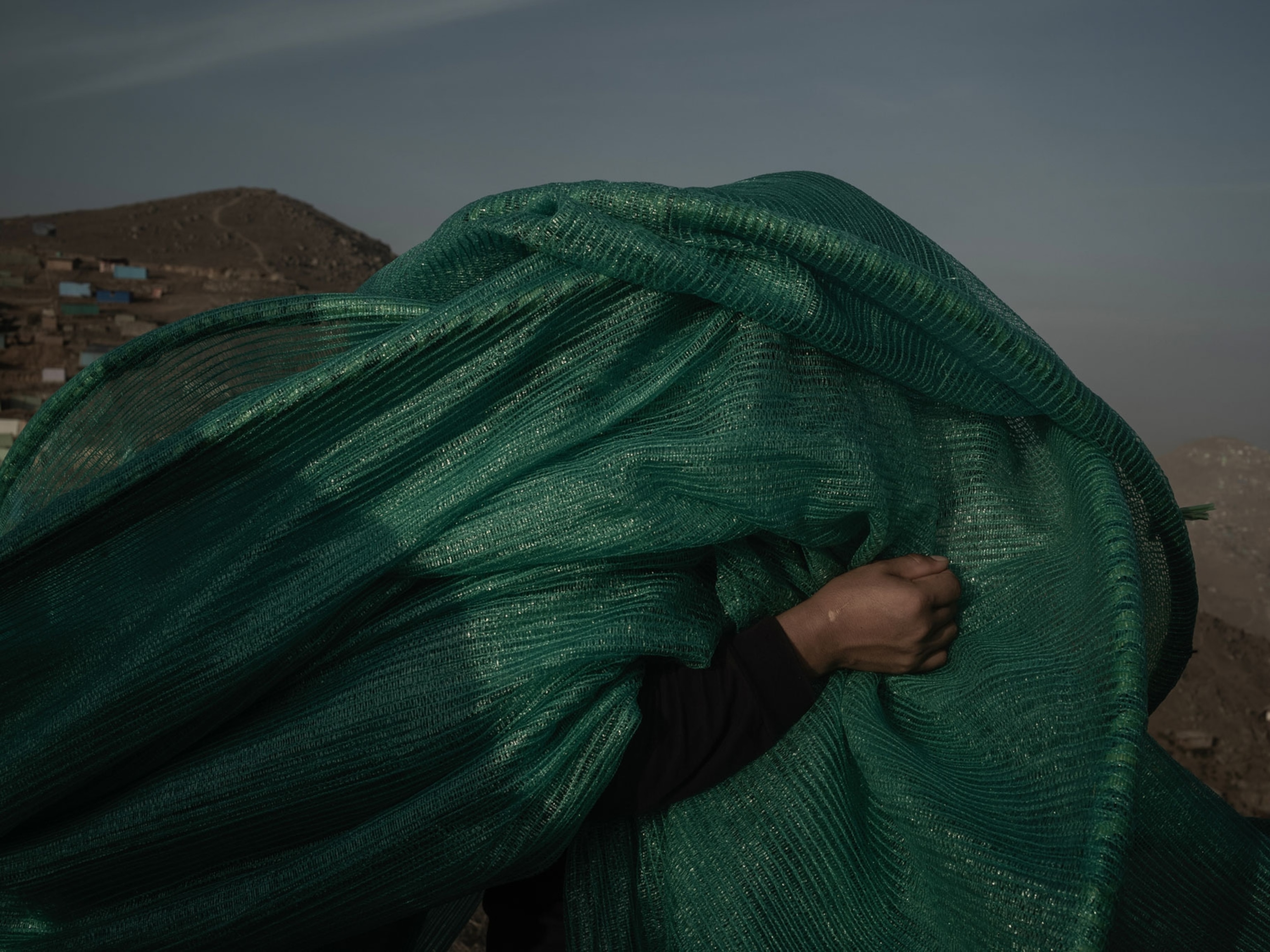
The delicate art of catching fog in the desert

How the world’s best chocolate is getting even better

This hot pepper is surviving Italy's extreme heat wave

Which leafy greens are healthiest—and which might make you sick?
- Environment
History & Culture
- History & Culture
- Mind, Body, Wonder
- Paid Content
- Terms of Use
- Privacy Policy
- Your US State Privacy Rights
- Children's Online Privacy Policy
- Interest-Based Ads
- About Nielsen Measurement
- Do Not Sell or Share My Personal Information
- Nat Geo Home
- Attend a Live Event
- Book a Trip
- Inspire Your Kids
- Shop Nat Geo
- Visit the D.C. Museum
- Learn About Our Impact
- Support Our Mission
- Advertise With Us
- Customer Service
- Renew Subscription
- Manage Your Subscription
- Work at Nat Geo
- Sign Up for Our Newsletters
- Contribute to Protect the Planet
Copyright © 1996-2015 National Geographic Society Copyright © 2015-2024 National Geographic Partners, LLC. All rights reserved

What lessons are being learnt from natural disasters?
In the past decade the responses to major natural disasters have been analyzed in hundreds of case studies and examined by experts from a variety of fields. Lessons learnt from these are then tested in subsequent crises and further data is collected. It is essential that the right lessons are learnt. In more recent years people who deliver disaster aid have begun to benefit from data driven decisionmaking, similar to commercial and military procedures.
More people are vulnerable today
Today more people than ever are vulnerable to natural disasters. Population growth and rapid growth of urban populations in developing countries over the last few decades has resulted in increased numbers of people who require help each year as a result of natural hazards such as storms, floods, and earthquakes. More than a billion people now live within 62 miles of an ocean, with over 10 million people being affected by flooding each year. Global climate change now threatens to increase these number significantly in the 21st Century.
Earthquakes are considered even more lethal for those in urban areas of poorer countries, highlighted by events in Port au Prince, Haiti, which claimed the lives of over 200,000 people. There has been a huge growth in the number of people living in poorly constructed urban dwellings in recent decades. Many of these people now live in poorly constructed housing.
Logistical problems in Haiti
The world responded to the Haiti earthquake with one of the biggest international aid efforts ever mounted, with thousands of tons of food, water and medicine being received from across the globe. But the small island of Haiti had a limited infrastructure before the earthquake struck. Physically moving the supplies into the country was extremely difficult with the capital’s port and airport severely damaged. Once they had arrived in Haiti, the task of distribution was even harder, with roads blocks by rubble.
With tens or even hundreds of different groups, charities and NGOs all descending on disaster zones, there is often a lack of coordination between them all. With many groups competing for resources such as food, fuel or transport, often duplicating their efforts which could be put to better use if better coordinated.

What has been learnt from previous disasters
Researchers continuously study relief efforts to learn lessons and find better ways to respond to natural disaster in the future:
7 December 1988 – Earthquake: Spitak, Armenia Employ local people Armenia was part of the Soviet Union, but Moscow prohibited residents from working on rebuilding, causing political tension. Four years later, only 30 per cent of necessary structures were finished.
17 January 1995 – Earthquake: Kobe, Japan Communicate better, more often, and more completely A lack of timely and accurate information made it difficult for families to get services they needed. Shelter locations were not well publicised, which delayed relief.
17 August 1999 – Earthquake: Izmit, Turkey Rebuild stronger After quakes destroyed unsafe structures, rebuilding started quickly and without proper regulation and building standards. This resulted in further vulnerable construction taking place.
26 December 2003 – Earthquake: Bam, Iran Restore law and order quickly refugees from the countryside flooded the city in search of aid, but there was no system to support them. Several days of looting held up distribution of supplies and threatened the recovery.
26 December 2004 – Tsunami: Indian Ocean multiple countries affected Basic provisions need to regionally appropriate Taking into account people’s beliefs and cultures.
29 August 2005 – Hurricane Katrina: New Orleans, Louisiana, USA Aid must be delivered quickly There was wide criticism at the speed at which aid reached the affected population.
8 October 2005 – Earthquake: Kashmir, Pakistan Medical care needs to be culturally appropriate Few female doctors were deployed to the region and due to strong local beliefs which restrict physical contact between men and female. This limited care available.
27 May 2006 – Earthquake: Yogyakarta, Java Prepare Areas where households had received some disaster training were able to deliver aid to others before official help arrived. People in those regions surveyed after the quake indicated that they appreciated such assistance.
Source: Lessons from Aceh (DEC), Organizing Armageddon: what we learned from the Haiti earthquake (WIRED)
Share this:

Leave a comment Cancel reply
- Already have a WordPress.com account? Log in now.
- Subscribe Subscribed
- Copy shortlink
- Report this content
- View post in Reader
- Manage subscriptions
- Collapse this bar

An official website of the United States government
Here’s how you know
Official websites use .gov
A .gov website belongs to an official government organization in the United States.
Secure .gov websites use HTTPS
A lock ( Lock A locked padlock ) or https:// means you’ve safely connected to the .gov website. Share sensitive information only on official, secure websites. .
Archived Content. This page contains information that may not reflect current policy or programs. Learn more
Living Through Hurricane Maria: A Lesson in Resilience
Editor’s Note: Hurricane Maria changed the lives of many when it hit Puerto Rico in September 2017. Four survivors, now FEMA local hires, share their stories on how Hurricane Maria impacted their lives, and how they are making a difference in their community every day.
As Hurricane Maria approached my home in Puerto Rico, this island where I was born, I was comforted that my two little girls and I would be safe. Our three-bedroom concrete house in Guayama, a five-minute drive from the closest beach on the southeast coast, was not in a flood zone. It had never flooded. I felt fortunate. My worry in those early days was for others who weren’t as lucky.
As news of the storm’s growing strength reached us, I ran around securing the house, which sits on a tiny hill in a small development. Plastic bags were stuffed in the aluminum louvers in the bedrooms. A plywood panel covered the glass window in the living room. I shoved 10-pound sandbags at the base of the back door. I was prepared. My house was barricaded. Or so I thought.
After a restless night with little sleep, daylight on Sept. 21 greeted us along with floodwaters rushing in from the street into my “safe house.” My first thought was to protect my girls; ages 3 and 4, they are my life. I grabbed milk from the refrigerator, an armful of their clothes and the red life vests I had them wear that magical weekend before when we celebrated my birthday at Jobos Beach in Isabela.

Two doors away were the neighbors we had waved to so many times in the year we lived in Guayama. We sought shelter with them for a short time, but as the floodwaters continued to rise, we moved again. In the midst of the storm, we sloshed through murky floodwaters and found refuge at a stranger’s home a few houses away. A couple in their 50s had taken in a few other neighbors: eight adults, a 14-year-old girl with autism, an 18-month-old, four children under age 12 and two dogs: a German shepherd and a Labrador retriever. For the next six hours or so, their 2,500-square-foot home was our sanctuary.
Soon, the streets of our enclave had turned into rivers, swollen by floodwaters that had nowhere to go as storm drains became clogged with solar panels and other debris. The waters were rising so fast, we knew we had to leave. Even though our pickup truck was partially submerged, it was our only hope for escape. As neighbors worked to unclog the storm drains, my girls’ father got the pickup started. Against driving winds and pelting rain, the girls and I trudged through the floodwaters, climbed into the pickup, and our small family made our way through water-logged streets to the children’s grandparents’ home.
With my girls safe, I returned home that afternoon. The sight was heartbreaking. Water had climbed a foot up the walls. Much of our furniture, some clothes, my architecture degrees, my portfolio of work, the girls’ toys — all were destroyed. I thought I was prepared. I never thought this would happen to me. We were far from rivers, far from the ocean. I never anticipated how high and how fast the floodwaters would rise.
The following days and weeks were agonizing. Not knowing about your family and friends was something new and scary. Scavenging for essentials became my daily focus. I constantly worried about finding milk, food, and water for the girls.
The shelves of local supermarkets that managed to reopen were stocked with leftover goods that had long expired. I spent five hours waiting in line to buy $15 worth of gasoline. I had to decide which errands to run because I needed to conserve gas. We had no cell service. No electricity. Our method of communication resembled what might have been found in the old days. “I left a WhatsApp on your door,” friends would joke when we eventually saw each other. It meant a message was posted on my front door. About 10 days after the storm, a note buoyed my spirits: “Te Amo. Pa.”
Our small neighborhood symbolized generosity, hope and resilience. Neighbors shared chicken strips. When I cooked fresh food, whatever was left unused was shared with my neighbors because there was no refrigerated storage. Neighbors picked up damaged and destroyed items left at the curb and took them to a landfill. They cleaned my girls’ pink-and-white dollhouse, which Maria decided to spare.

With no TV or cell phones to consume our time, the neighbors would barbeque together, sit around chatting and sharing drinks. I started reading again. I taught my girls how to wash clothes by hand. I began to notice children at play, racing bicycles they rode only occasionally before the storm. For eight weeks, that routine was our new post-Maria normal.
I applied for a job with FEMA and started working the week before Thanksgiving. This job has given me a great sense of satisfaction because I can use my skills and experience to contribute in the recovery of my beloved Puerto Rico.
Many people left the island after hurricanes Irma and Maria, which came ashore only two weeks apart. Many close friends I knew as a child went to the mainland. Leaving Puerto Rico is not a choice for me. I now live in the northeast, farther away from the water but closer to a new beginning. I am a hopeless optimist, and I want to raise my girls here with our family, and their extended family. In this slice of paradise, surrounded by my people and my culture, I can only hope to live and do my part for a better Puerto Rico.

Rebuilding communities after disasters – four and a half lessons learned
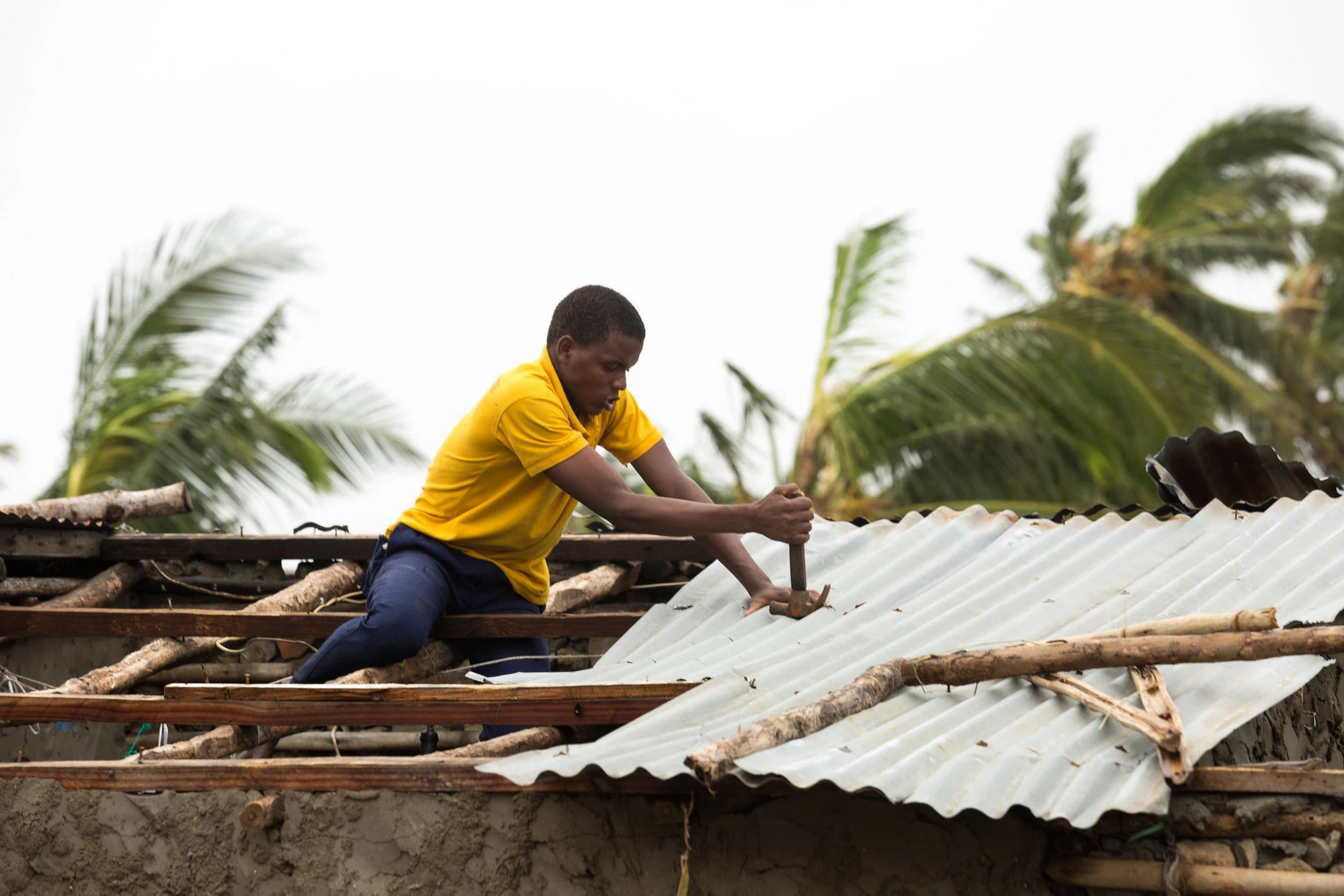
With climate change increasing the probability of extreme weather events and the explosive and largely unplanned growth of populations and assets in the developing world, the process of post-disaster rebuilding of communities offers a stark choice: The right policy choices could set economies, cities, towns and villages, and neighborhoods on a resilient, sustainable path, and, unfortunately, the wrong policies would inevitably lead to fraud, waste, corruption, delays, and failure. Several studies by the World Bank and the IMF, including a global review by my colleagues and me , have looked at the reconstruction process after major disasters over the past several decades. To my mind, the four of the most important lessons we have learned are: 1. The macroeconomic growth impacts of major weather disasters are negative, large, and persistent, but fiscal impacts can be mitigated through good policy .
- Integrating disaster risks into the medium-term fiscal framework, fixing the budgetary “plumbing” that enables resources to hit the ground quickly, e.g. by incorporating some escape clauses for disasters in budget laws and fiscal rules, or streamlining the process for preparing and passing a revised budget;
- Having emergency procurement procedures in place ex-ante; and
- Generating fiscal space to finance disaster response programs, by transferring residual risks to the private sector – such as Mexico’s public asset insurance program FONDEN – or buying reinsurance in international capital markets, such as the Pacific Catastrophe Risk and Financing Initiative .
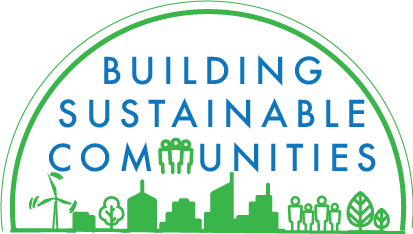
Practice Manager, Climate Change and Disaster Risk Management, South Asia Region
Join the Conversation
- Share on mail
- comments added

A Safer Future: Reducing the Impacts of Natural Disasters (1991)
Chapter: 7. learning from disasters, learning from disasters.
D isasters are tragedies. Yet they can serve as laboratories for understanding the physical and social factors governing them. Valuable information gathered during the hours, days, months, and years following a disaster can lead to policies and practices that reduce the risk of loss of life, property, and natural resources. This information can be used to enhance the effectiveness of hazard and risk assessments, awareness and education, preparedness, prediction and warning, and mitigation.
Because disasters have both immediate and long-term impacts, postdisaster studies should be conducted so that lessons can be learned at all phases. Much information on the immediate effects of disasters on people, buildings, personal property, lifelines, economic activities, and natural resources must be gathered within the first few hours to days because evidence is rapidly lost during rescue, clean-up, and recovery. As experience has shown, however, human suffering and other damage do not end with the event itself. Thus research should focus on the complicated processes of recovery and reconstruction in the months and years following a disaster.
The postdisaster period provides the opportunity for immediate hazard reduction action in the political, legal, and administrative arenas. Immediately after a disaster, heightened awareness of damages eases the usual difficulty of adopting and enforcing hazard reduction legislation.
The Committee recommends that data on the physical, biological, social, and health aspects of disasters be systematically collected and shared and that the resulting lessons learned be incorporated into policy and practice to reduce the impacts of future disasters.
To achieve this goal, the Committee proposes that:
guidelines for documenting the effects of natural disasters be developed and adopted,
information resulting from postdisaster studies be shared, and
disaster reduction programs and legislation be developed for rapid implementation after an event.
A program for enhancing the nation's capabilities to learn from disasters should include:
Postdisaster data acquisition. Efforts should be made to coordinate and standardize the type of data collected by postdisaster investigation teams. Data should relate to the physical, biological, and social phenomena leading to the disaster; numbers and patterns of injuries and deaths; performance of buildings and lifelines; and response of individuals and organizations. Successful efforts to reduce damage and loss of life should also be included.
During the past few decades, the National Research Council, the Earthquake Engineering Research Institute, the Centers for Disease Control, OFDA, and other public and private organizations have sent multidisciplinary teams to analyze the immediate impact of disasters throughout the world. Extending this practice to all presidentially declared disasters should be considered. Academic researchers and others have conducted a few intermediate-term studies, focusing on recovery and reconstruction in
the first few years. Additional studies of this process would provide valuable lessons for improving hazard assessments, mitigation, disaster planning, recovery, and reconstruction. (See Figure 4 .) Also needed is long-term research on the effects of disasters 10 or more years after their occurrence.
Coordination of the type of data collected and the format in which it is presented would enhance all these research efforts. Databases and analysis programs should be improved to facilitate the collection and sharing of information, the translation of lessons learned into improved disaster preparedness and mitigation measures, and their transfer to policymakers and practitioners.
It is important that data be collected immediately after a disaster. Still more important is that rescue, relief, and clean-up operations not be hindered by the convergence of investigation teams. Experience shows that the arrival of many teams can divert local officials from the job of disaster response and recovery to that of reluctant host. Clearly, agreements should be made to ensure that disaster sites are not overrun by investigators.
Workshops should be held to develop guidelines on the acquisition, analysis, and use of data from postdisaster investigative teams and to establish agreements for mobilizing these teams. In the United States, workshops may be organized under the auspices of universities, professional associations, and others. At the international level, they can be implemented through relevant UN system organizations — the IDNDR Secretariat, UNESCO, the World Meteorological Organization (WMO), the World Health Organization (WHO), the United Nations Development Programme (UNDP), the Office of the UN Disaster Relief Co-ordinator, and other bodies. Guidelines should be reviewed periodically and revised as appropriate.
Postdisaster data sharing. Information is useful when it is shared and applied, and mechanisms for exchanging information from postdisaster analyses and other research are needed. Because major disasters in any one nation are infrequent, international cooperation is necessary to derive the benefits of the volume of knowledge and experience that can be gained only by working in the global laboratory.
Sharing postdisaster data increases their potential to help improve disaster reduction practices, particularly when disciplines come together. Geologists, geophysicists, seismologists, architects, engineers, biologists, sociologists, urban planners, financial institutions, public officials, and medical personnel working together are more likely to devise practical natural hazard reduction strategies than would any of these groups acting singly.
National and international sharing of postdisaster information should be accomplished through news releases, briefings, newsletters, conferences, workshops, and other means. Sponsors of these activities should include organizations involved in both research and application.
Capitalizing on enhanced awareness. A disaster brings risk reduction to the forefront of community priorities. Public sensitivity to the risks associated with natural hazards is especially high for about six months after a major event. This awareness leads to a corresponding will to take life- and property-saving actions. The postdisaster environment also brings public officials face to face with liability issues. As a result, political support for preparedness and mitigation programs increases during this time — the introduction and implementation of all types of hazard reduction policies and practices become possible.
This brief opportunity cannot be bypassed. Concerned individuals, professional and community groups, and policymakers must be ready. Hazard information and proposed legislation, regulations, and enforcement guidelines should be prepared in advance, using the lessons from postdisaster investigations and other research. Plans should be made for rapid incorporation of experience into the decision-making process.
Model legislation and guidelines for incorporation of disaster reduction into community practice should be developed. Professional organizations such as the American Bar Association, the American Society for Public Administration, the American Public Works Association, and the American Planning Association should establish task forces to develop and disseminate these models. Local task forces should adapt them to the risks and characteristics of their communities and devise strategies for promoting them at the first opportunity.
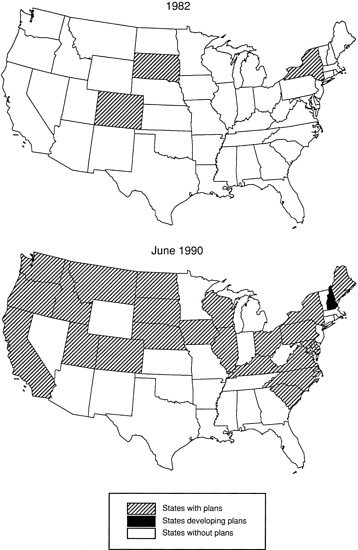
Figure 4. CHANGES IN THE STATUS OF DROUGHT PLANNING, 1982-90 A 1982 survey of all 50 states showed only 3 with drought plans. The droughts of 1986-88 gave states a new appreciation of their vulnerability to severe water shortages and the effects of their poorly coordinated responses. By June 1990, 23 states had plans and another had begun the planning process. (Source: D. Wilhite, International Drought Information Center.)
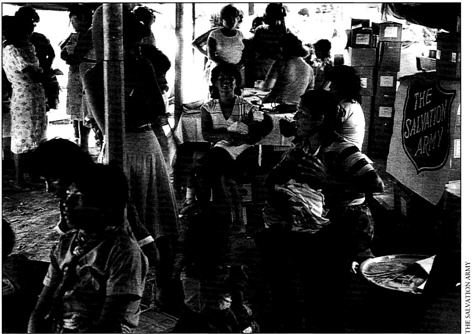
The first few days after a disaster see the influx of relief efforts — volunteers, government assistance, and organized private voluntary organizations. A strong working knowledge of the area struck is needed to ensure that appropriate supplies are delivered and that the special needs of the community — such as possible cultural or language barriers — are anticipated.
Initial priorities for U.S. participation in the International Decade for Natural Disaster Reduction, declared by the United Nations, are contained in this volume. It focuses on seven issues: hazard and risk assessment; awareness and education; mitigation; preparedness for emergency response; recovery and reconstruction; prediction and warning; learning from disasters; and U.S. participation internationally.
The committee presents its philosophy of calls for broad public and private participation to reduce the toll of disasters.
READ FREE ONLINE
Welcome to OpenBook!
You're looking at OpenBook, NAP.edu's online reading room since 1999. Based on feedback from you, our users, we've made some improvements that make it easier than ever to read thousands of publications on our website.
Do you want to take a quick tour of the OpenBook's features?
Show this book's table of contents , where you can jump to any chapter by name.
...or use these buttons to go back to the previous chapter or skip to the next one.
Jump up to the previous page or down to the next one. Also, you can type in a page number and press Enter to go directly to that page in the book.
Switch between the Original Pages , where you can read the report as it appeared in print, and Text Pages for the web version, where you can highlight and search the text.
To search the entire text of this book, type in your search term here and press Enter .
Share a link to this book page on your preferred social network or via email.
View our suggested citation for this chapter.
Ready to take your reading offline? Click here to buy this book in print or download it as a free PDF, if available.
Get Email Updates
Do you enjoy reading reports from the Academies online for free ? Sign up for email notifications and we'll let you know about new publications in your areas of interest when they're released.
Thank you for visiting nature.com. You are using a browser version with limited support for CSS. To obtain the best experience, we recommend you use a more up to date browser (or turn off compatibility mode in Internet Explorer). In the meantime, to ensure continued support, we are displaying the site without styles and JavaScript.
- View all journals
- Explore content
- About the journal
- Publish with us
- Sign up for alerts
- NATURE BRIEFING
- 24 November 2023
Daily briefing: What we can learn from disasters that were averted
- Katrina Krämer
You can also search for this author in PubMed Google Scholar
Hello Nature readers, would you like to get this Briefing in your inbox free every day? Sign up here .
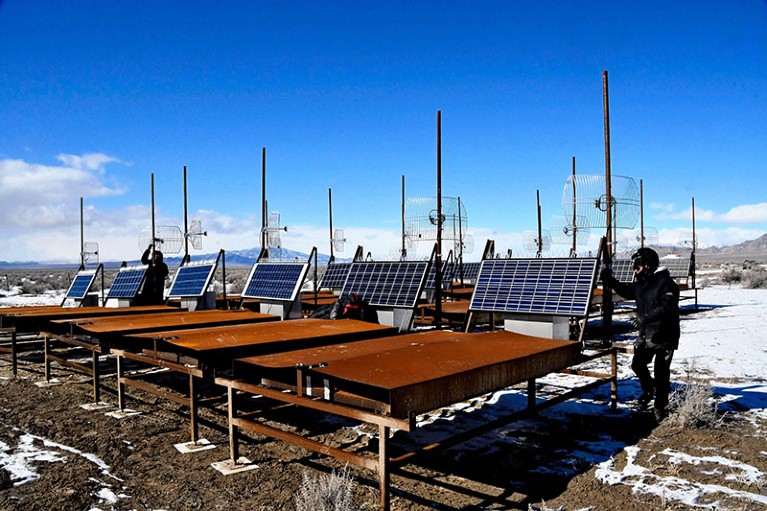
Researchers check the Telescope Array surface detector in the high desert in Delta, Utah, in 2019. In 2021, the Telescope Array detected the second-most energetic cosmic ray particle recorded. Credit: The Yomiuri Shimbun via AP/Alamy
Turbocharged cosmic ray spotted
Scientists have detected the highest-energy cosmic ray since the Oh-My-God particle in 1991 . Cosmic rays are high-energy subatomic particles that often originate from a stellar explosion or black hole. The latest turbocharged particle, dubbed Amaterasu, seems to have come from a void-like region in space. One explanation could be that Amaterasu actually came from a different region and scientists’ models of what influences the course of cosmic rays are off. Another possibility is that the rays are produced by unknown physics.
Nature | 4 min read
Reference: Science paper
‘Treasure trove’ of new CRISPR systems
An algorithm has found 188 genetic clusters associated with undiscovered and rare CRISPR systems , including one that targets RNA, after analysing millions of genomes. CRISPR–Cas9 is best known as a tool for editing DNA, but its natural function is as part of the immune system that helps certain microorganisms to fight off viruses. Some of the new systems could eventually be adapted into genome-editing, diagnostic or research tools.
Nature | 5 min read
UK politicians struggled with COVID science
UK politicians didn’t have the necessary scientific knowledge to understand research-based advice during the COVID-19 pandemic, a public inquiry into the country’s response to the crisis has heard. Then-chief scientific adviser Patrick Vallance said that then-prime minister Boris Johnson struggled to understand data shown in graphs . One difficulty was that the evidence sometimes changed quickly, says virologist Shahid Jameel. “Science is a process, which most people, including politicians — and some scientists — do not understand.”
Features & opinion
Ai after the openai drama.
The debacle that has played out at OpenAI over the past week has highlighted concerns that commercial forces are acting against responsible development of artificial intelligence (AI). The company that built ChatGPT suddenly fired its co-founder and chief executive Sam Altman, only to reinstate him five days later, after staff revolted. Sarah Myers West at the AI Now Institute, a policy-research organization, is among those who worry that AI products are appearing before anyone fully understands their behaviour, uses and misuses. For too long, regulators have taken a casual approach with the companies that wield most AI power, she points out. “We need to start by enforcing the laws we have right now.”
Nature | 7 min read
How to avert disasters
Tornadoes, earthquakes, wildfires and other dangerous environmental events don’t have to lead to death and destruction , writes a group of disaster specialists. One of the lessons they drew from looking at examples of disasters avoided is an understanding that disasters often result when people are forced to live and work in harm’s way. Short-term actions such as evacuation and sheltering can mitigate the immediate consequences, and realistic and achievable targets are important in long-term planning.
The Conversation | 5 min read
Futures: Cherenkov blue
A tourist demands to explore a historic site off the beaten track in the latest short story for Nature ’s Futures series.
Nature | 6 min read
Podcast: What happens after polio’s end
Poliovirus could be eradicated within three years. But eradication isn’t the same as extinction . To prevent the disease from making a comeback, countries are screening wastewater for signs of the virus. And vaccination programmes need to continue, which requires the live virus to be preserved — a containment nightmare. “We need to find ways of making vaccines without using live virus,” science journalist Aisling Irwin tells the Nature Podcast . “There is some really exciting work going on with virus-like particles and mRNA vaccines.”
Nature Podcast | 22 min listen
Subscribe to the Nature Podcast on Apple Podcasts , Google Podcasts or Spotify , or use the RSS feed .
Quote of the day
“researchers are simply not choosing to study health factors specific to women, which is perhaps not surprising when 80% of tenured neuroscientists are men.”.
Although women make up about 50% of people enrolled in neuroimaging studies, less than 0.5% of studies look at women’s health, says psychologist Emily Jacobs. ( Nature | 5 min read )
doi: https://doi.org/10.1038/d41586-023-03737-5
This week, Leif Penguinson is exploring the Las Angustias ravine on La Palma, Spain. Can you find the penguin ?The answer will be in Monday’s e-mail, all thanks to Briefing photo editor and penguin wrangler Tom Houghton.
This newsletter is always evolving — tell us what you think! Please send your feedback to [email protected] .
Thanks for reading,
Katrina Krämer, associate editor, Nature Briefing
Want more? Sign up to our other free Nature Briefing newsletters:
• Nature Briefing: AI & Robotics — 100% written by humans, of course
• Nature Briefing: Anthropocene — climate change, biodiversity, sustainability and geoengineering
• Nature Briefing: Cancer — a weekly newsletter written with cancer researchers in mind
• Nature Briefing: Translational Research covers biotechnology, drug discovery and pharma
Related Articles
Daily briefing: How AI brought back the Klimt masterpiece destroyed by Nazis
Daily briefing: Deep-sea mining might harm wildlife
Daily briefing: These bats mate more like birds than mammals
Daily briefing: Why these PhD scientists went into teaching
Research Positions in China Spallation Neutron Source
We are seeking 23 researchers with a proven track record of conducting advanced research and demonstrating outstanding academic achievements.
Dongguan, Guangdong, China
Spallation Neutron Source Science Center
Postdoctoral Associate- Electrophysiology
Houston, Texas (US)
Baylor College of Medicine (BCM)
Postdoctoral Scholar - Clinical Pharmacy & Translational Science
Memphis, Tennessee
The University of Tennessee Health Science Center (UTHSC)
Postdoctoral Scholar - Pathology
Faculty Positions in School of Engineering, Westlake University
The School of Engineering (SOE) at Westlake University is seeking to fill multiple tenured or tenure-track faculty positions in all ranks.
Hangzhou, Zhejiang, China
Westlake University
Sign up for the Nature Briefing newsletter — what matters in science, free to your inbox daily.
Quick links
- Explore articles by subject
- Guide to authors
- Editorial policies
Natural Disasters Essay for Students and Children
500+ words essay on natural disasters.
A Natural disaster is an unforeseen occurrence of an event that causes harm to society. There are many Natural disasters that damage the environment and the people living in it. Some of them are earthquakes , cyclones, floods, Tsunami , landslides, volcanic eruption, and avalanches. Spatial extent measures the degree or severity of the disaster.

Levels of Disaster
The severity or degree of damage can be further divided into three categories:
Small Scale Disasters: Small scale disasters are those that extend from 50 Kms. to 100 Kms. So this kind of disasters does not cause much damage.
Medium-scale disasters: Medium Scale disasters extend from 100 Kms to 500 Kms. These cause more damage than a small scale disaster. Moreover, they can cause greater damage if they occur in colonial states.
Large Scale Disasters: These disasters cover an area of more than 1000 Kms. These cause the most severe damage to the environment. Furthermore, these disasters can even take over a country if the degree is high. For instance, the wiping out of the dinosaurs was because of a large scale natural disaster.
Get the huge list of more than 500 Essay Topics and Ideas
Types of Disasters

Causes: These can cause of releasing of the energy. This release is from the core of the earth. Furthermore, the release of energy causes seismic waves. Rupturing of geological faults causes earthquakes. But other events like volcanic eruptions, landslides mine blasts can also cause it.
Landslides: Landslides is the moving of big boulders of rocks or debris down a slope. As a result, landslides occur on mountains and hilly areas. Moreover, landslides can cause destruction to man-made things in many ways.
Causes: Gravitational pull, volcanic eruptions , earthquakes can cause landslides. Moreover, soil erosion due to deforestation is also a cause of landslides.
Avalanches: Avalanches are like landslides. But instead of rocks thousand tons of snow falls down the slope. Moreover, this causes extreme damage to anything that comes in its way. People who live in snowy mountains always have fear of it.
Causes: Avalanches takes places when there is a large accumulation of snow on the mountains. Moreover, they can also occur from earthquakes and volcanic eruptions. Furthermore, the chances of surviving an avalanche are very less. This is because people die of hypothermia in it.
Tsunami: Tsunami is the production of very high waves in oceans and seas. Moreover, the displacement of the ground causes these high waves. A tsunami can cause floods if it occurs near shores. A Tsunami can consist of multiple waves. Moreover, these waves have a high current. Therefore it can reach coastlines within minutes. The main threat of a tsunami is if a person sees a Tsunami he cannot outrun it.
Causes: Tsunami is unlike normal eaves that occur due to the wind. But Tsunami is waves that occur by ground displacement. Thus earthquakes are the main causes of Tsunamis.
FAQs on Essay on natural disaster
Q1.What are natural disasters?
A1. Natural Disasters are unforeseen events that cause damage to the environment and the people.
Q2.Name some Natural disasters.
A2. Some Natural Disasters are earthquakes, volcanic eruptions, Landslides, floods, Tsunami, avalanches. Natural disasters can cause great damage to human society. But preventive measures can be taken to reduce the damage from these disasters.
Customize your course in 30 seconds
Which class are you in.

- Travelling Essay
- Picnic Essay
- Our Country Essay
- My Parents Essay
- Essay on Favourite Personality
- Essay on Memorable Day of My Life
- Essay on Knowledge is Power
- Essay on Gurpurab
- Essay on My Favourite Season
- Essay on Types of Sports
Leave a Reply Cancel reply
Your email address will not be published. Required fields are marked *
Download the App

3 lessons about what really matters in life, learned in the pandemic
Share this idea.
- Click to share on Facebook (Opens in new window)
- Click to share on Twitter (Opens in new window)
- Click to share on LinkedIn (Opens in new window)
- Click to share on Reddit (Opens in new window)
- Click to share on Pocket (Opens in new window)
- Click to share on WhatsApp (Opens in new window)
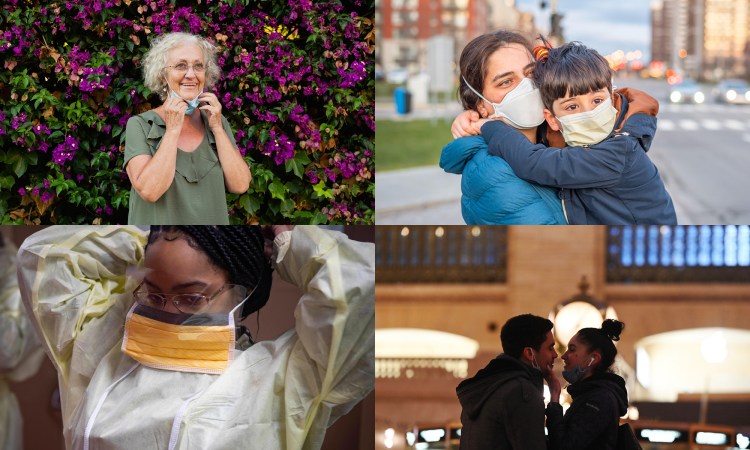
The last year has been like no other.
Since March 2020, every person on the planet has had their life shaken by the COVID-19 pandemic in some way. In the midst of the hardship and challenges, there’s been the sense among many people that this period has helped us evaluate our lives and focus on what’s truly important.
And maybe, just maybe, we’ve learned something from this moment.
In response to the pandemic, StoryCorps — a nonprofit dedicated to recording the largest collection of human stories and winner of the 2015 TED Prize — created StoryCorps Connect , a new tool to bring together loved ones via video conferencing and record the audio of their conversations.
Below are excerpts from a handful of the thousands of interviews recorded in recent months through StoryCorps Connect.
Lesson #1: The pandemic has helped us find deeper meaning in our work
Two mail carriers see the value in every delivery they make
Before getting a job as a mail carrier in Palm Beach, Florida, Evette Jourdain was going through a hard time — she’d lost her father, her brother and then her home. Finding reliable work helped tremendously, but then came COVID-19.
As Jourdain talked to her coworker , fellow postal worker Craig Boddie, she shared how she was feeling. “My anxiety levels are always on 10,” she says. “I pray on my way to work, I pray on my lunch break, I pray when I’m at the box. What keeps me going is just the fact that I need to keep going.”
Boddie agreed. His wife has autoimmune disease, and as he puts it, “Every day I wake up and wonder, ‘Is this the day that COVID-19 is gonna come home with me?’”
But he also knows that his work is more important than ever, and he thinks about how each package he carries contains something to keep people afloat in some way. “We’re like a lifeline — getting these people their medicines, their supplies.”
A health care provider gains inspiration from a classic novel
Josh Belser and Sam Dow are good friends who grew up in Tampa, Florida, and who now both work in healthcare 400 miles apart — Belser as a nurse in Syracuse, New York, and Dow as a health technician in Ann Arbor, Michigan.
And with COVID-19, they’ve both found themselves on the frontlines. “My floor was one of the first that was converted to strictly dealing with COVID patients. Our jobs changed like overnight,” says Dow in their StoryCorps conversation. “There was no dress rehearsal — the numbers started to go up and it was show time.”
So how did they get through? Dow tells his friend he found some inspiration in Albert Camus’s classic novel The Plague . “It’s about an epidemic, and the main character was a doctor,” he explains. “And he says the way to get through something like this is to be a decent person. Somebody asks him, ‘What makes a decent person?’ He says, ‘I don’t know but, for me, it’s just doing my job the best way I can.’”
Dow says he’s tried to do exactly that. “Hopefully I made a difference in people’s lives.”
Lesson #2: Family rhythms have shifted, but our ties are as important as ever
A grandmother takes strength from her ancestors
Like so many other people, COVID-19 took Jackie Stockton by surprise. One day, she was at her church in Long Beach Island, New Jersey, celebrating her 90th birthday — and the next thing she knew, she was in the hospital. What’s more, she was part of a community cluster, and five members of the church eventually died from the virus, including Stockton’s best friend as well as her son-in-law.
Stockton spoke to her daughter , Alice Stockton-Rossini, about these losses. She says, “I remember 9/11 as though it just happened, but then it was over. This will never, ever be over.”
As a way to cope, she finds herself thinking of her great-grandmother. “She lost half of her children. She lived through the worst kind of hell,” she recalls. “She was an amazing woman, and so was her husband. They just did the things they needed to do. And they survived.”
The pandemic brings together a mother and daughter
In 2005, attorney Chalana McFarland of Atlanta, Georgia, was convicted of mortgage fraud and sentenced to 30 years in prison. The judge hoped this harsh sentence would deter others from similar crimes, but it had severe consequences for McFarland’s 4-year-old daughter, Nia Cosby.
In 2020, with the onset of COVID-19, McFarland was transferred to home confinement. Upon being released, the first person she saw was her now college-age daughter. In a candid conversation during their first weekend together in 15 years, Nia describes their reunion as “one of the best moments of my life.”
McFarland agrees. “When I left, you were driving a Barbie car, and now you’re flexin’ in the Honda Accord,” she says. “We’ve had a relationship over the years, but it’s like pieces of a puzzle that we’re just now putting together. I can’t wait for you to discover how much alike we really are, because you haven’t really gotten to know who I am. But I see so much of me in you. Out of all the things that I’ve done in my life, you are the absolute one thing that I got right.”
A canceled reunion highlights the power of family stories
The Quander family has a long history in the US. Its matriarch, Nancy Carter, was one of 123 enslaved people owned by George Washington, and she was freed in his will. She later married Charles Quander, and in 1926, their descendents held the first Quander family reunion.
It took place every year since 1926 — until now.
“This one would have been the 95th reunion,” Rohulamin Quander, 76, tells his 18-year-old cousin , Alicia Argrett.
In lieu of gathering in person, Argrett asks him: “What would you like to pass on to me?” His reply: “That you are the keeper of the stories.”
Argrett appreciates his call to take this responsibility seriously. “As we’ve seen this year, you never know when your last [family reunion] could be,” she says. “I think it’s important to capture those opportunities while you still have them in your grasp. And I’m going to do what I can on my end to keep the spirit of the family alive.”
Lesson #3: Small gestures have a huge impact on our well-being
This pandemic led to the best date of her life — a staircase apart
As the director of microbiology at a hospital in Rochester, New York, Roberto Vargas’s job is to diagnose infectious disease. With his lab running constant COVID-19 tests, he needed to isolate himself from his wife, Susan Vargas, and their four children.
Initially, he stayed in a hotel but found it too lonely. So he moved into the family’s basement, stipulating that no one else was to go beyond the top of the stairs. One night, as the Vargases recall in their conversation, a coworker brought them all a home-cooked meal. “You sat at the bottom of the stairs in a rocking chair, and I was at the top. It was the first time we had been able to connect in so long,” says Susan.
This simple moment, she says, helped get her through the months of the pandemic, and it will forever be what she remembers most from this time: “As crazy as it sounds, it’s the best date I’ve ever had with you in my life.”
Mother and son reflect on a special, shared memory
In 2015, nine-year-old William Chambers went to work with his mother. Not to an office, but to a senior center near Boston, Massachusetts, where Ceceley Chambers works as an interfaith chaplain providing spiritual counsel to those with memory loss. Ceceley knew the seniors would enjoy spending time with a young person.
What she didn’t expect was for William to sit down at a table with a woman cradling a baby doll she thought was real, and talk to her as easily as if she were his friend. “You just jumped into her world,” she recalls.
As Ceceley continues her work during the pandemic, both she and William have been thinking about that moment a lot. Although the structure of her days hasn’t changed, she’s seeing much more fear in those she’s counseling. William says he has been working hard to cultivate empathy for whatever mood she comes home with. Thinking of that woman with the doll and the other patients helps him.
He adds, “They made me think you should enjoy life as much as you can, ‘cause it doesn’t happen forever.”
Want to record an interview with a loved one — nearby or far away — about their experiences during the pandemic? Here’s how to get started . You can also explore more StoryCorps stories here .
Watch StoryCorps founder Dave Isay’s TED Prize Talk here:
About the author
Kate Torgovnick May is a journalist and writer based in Los Angeles. A former storyteller at TED, she has worked with the ambitious thinkers of the TED Prize and Audacious Project, helping them share their stories in video and text. She's also the author of the narrative nonfiction book, CHEER!: Inside the Secret World of College Cheerleaders, and has written for the television series NCIS and Hellcats. Read more about her work at KateTorgovnickMay.com.
- society and culture
TED Talk of the Day

How to make radical climate action the new normal


6 ways to give that aren't about money

A smart way to handle anxiety -- courtesy of soccer great Lionel Messi

How do top athletes get into the zone? By getting uncomfortable

6 things people do around the world to slow down

Creating a contract -- yes, a contract! -- could help you get what you want from your relationship

Could your life story use an update? Here’s how to do it

6 tips to help you be a better human now

How to have better conversations on social media (really!)

Let’s stop calling them “soft skills” -- and call them “real skills” instead

3 strategies for effective leadership, from a former astronaut

There’s a know-it-all at every job — here’s how to deal
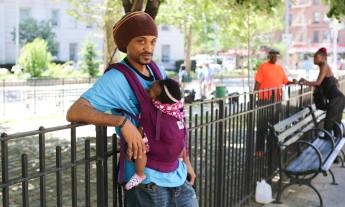
The art of storytelling, according to the founders of StoryCorps and Humans of New York
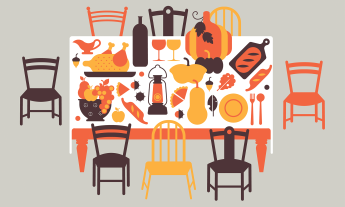
10 questions to ask your family around the table
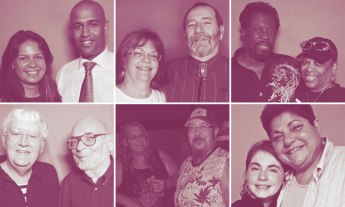
10 real-life love stories that'll grab you by the heart, from Storycorps
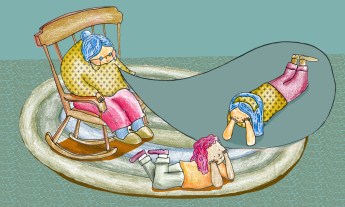
How to unlock your family history
Views: 2,829
Carrie Creasey
Lessons Learned in Disaster and Emergency Response
When a major disaster or emergency strikes, having an up-to-date emergency management plan in place is vital to helping emergency responders act quickly and effectively. In support of this goal, and its overarching strategic plan, this week the United States Federal Emergency Management Agency (FEMA) released the Fourth Edition of the National Response Framework (NRF) , as well as the Emergency Support Function #14 – Cross-Sector Business and Infrastructure Annex.
These new documents focus on lessons learned from recent catastrophe’s, such as the 2017 hurricanes and wildfire season, and also address the importance of cross-sector partnerships with business and infrastructure operators to better manage community lifelines during an emergency — “services that enable the continuous operation of critical government and business functions and are essential to human health and safety or economic security”.
Keeping emergency management plans up-to-date, involving all essential stakeholders, and continuously improving response and prevention strategies are all essential components to ensure that loss of life is minimized, property and the environment are protected, and basic support services reach those in need during a crisis.
For more information, visit the HSDL Featured Topics page for a variety of topics focused on natural disasters and security emergencies, such as Hurricanes , Wildfires , and Mass Evacuation . Please note that an HSDL login is required to view some of these resources.
Need help finding something? Ask one of our librarians for assistance!

Note: you may need to login to the HSDL to view some resources mentioned in the blog.
Need help finding something? Ask our librarians for assistance!
More from the HSDL Blog

Tensions Rising: Student Demonstrations Against Israel’s War in Gaza

2024 Report on the Cybersecurity Posture of the United States

CCP’S Role in the Fentanyl Crisis

Hacking the Hackers: Law Enforcement Considerations Against Cyber Crime
Privacy overview.
88 Natural Disaster Essay Topic Ideas & Examples
Writing about risks or management of catastrophes caused by nature? Our experts have prepared a list of topics and essay questions about natural disasters – check them out!
🏆 Best Natural Disaster Essay Topics & Examples
📌 catchy essay titles for natural disasters, 👍 good essay topics on natural disaster, ❓ essay questions about natural disasters.
- Effects of Natural Disasters Essay Various factors influence the effects that a disaster on a country among them the magnitude of the disaster, the geography of the area affected and recovery efforts directed towards reducing the immediate effects of a […]
- “Natural Disaster Management Planning” by Perry Perry writes the article Natural disaster management planning: A study of logistics manager responding to the tsunami with the aim of analysing the tsunami disaster that occurred in 2004, as well as providing comprehensive overview […]
- Natural Disaster Aftermath: Spirituality and Health Care Second, healthcare providers should improve their staff’s cultural sensitivity and awareness of various spiritual practices and denominations in order to develop a flexible blueprint of communication with patients and proper intervention.
- Risk vs. Cost in Natural Disaster Insurance Floods are more predictable, and it is possible to create a map for each flood-prone area that would allow insurance companies to calculate the exact cost of premiums.
- National Response to Terrorism & Natural Disaster The National Response Framework governs the national security and crisis response to dynamic emergencies and natural disasters that occur in the community.
- Natural Disaster Risks Overview The Resilinc indicators provide analysis of the riskiness of the locations, such as real-time monitoring of the disruptions, analysis of the multiple risk indicators, assessment of the suppliers in the risky countries, and analysis of […]
- How Can a Company’s Knowledge Base Be Protected in the Event of a Natural Disaster? In any cases if there is a sudden disaster and there is loss of any data, it becomes highly difficult for the managers to get back the knowledge of the business and also if there […]
- Incident Command System: Natural Disaster Prevention Planning The disaster brought considerable financial losses to the states, and the Sonora government had to provide funding and support in the form of $30 million for the purpose of residential relief.
- Weather and Climate: Tathra Natural Disaster The paper discusses the affected areas, the causes of the hazard, and its impacts. The disaster occurred in the forests near the bank of Bega River and Tathra, a small town in the Far South […]
- Earthquake as a Unique Type of Natural Disaster Earthquakes are believed to be one of the most dangerous natural disasters, and they can have a lot of negative effects on both the community and the environment.
- Australian and Asian Natural Disaster Epidemiology The present paper discusses the disaster epidemiology of Australia and three countries that are located in the Asian region. While the latter did not result in any financial damage, they led to the deaths of […]
- Preparing for a Natural Disaster in US Responders also need to be given the necessary psychological support and training in anticipation of the imminent trauma that they will be exposed to by the devastating effects of the floods.
- Managing Natural Disaster Risks in a Changing Climate Usually, it is difficult to figure out the frequency of natural disasters and the kind of damage that can result from the occurrence of these disasters.
- Indiana University Bloomington Natural Disaster Risk Assessment and Risk Management This high concentration of infrastructure is likely to increase the level of damages because a destruction of many buildings is likely to result in higher human deaths and more financial losses.
- IUB Natural Disaster Risk Assessments and Risk Management Due to the fact that Tornado is a natural disaster that locations around IUB need to be prepared of; there are lots of vulnerabilities in the University.
- Preparing for a Safe Evacuation due to a Natural Disaster: Saving Valuables and Having an Evacuation Plan
- Haiti And Natural Disaster : Causes And Natural Disaster
- Macroeconomic Fluctuations Under Natural Disaster Shocks in Central America and the Caribbean
- Types Of Police Plans For A Natural Disaster
- The People as a Natural Disaster: Redemptive Violence in Jacobin Political Thought
- Federal Natural Disaster Assistance Programs for Livestock Producers, 2008-16
- There’s No Such Thing as a Natural Disaster
- Natural Disaster, Policy Action, and Mental Well Being: The Case of Fukushima
- The Economics of Natural Disaster-Kerala Floods
- Innovations in Agricultural and Natural Disaster Insurance
- Hurricane Katrina: Natural Disaster or Racial Disaster
- Variation in Risk Seeking Behavior in a Natural Experiment on Large Losses Induced by a Natural Disaster
- The Lisbon Earthquake : A Natural Disaster That Evoked
- The Role of Social Media During a Natural Disaster: 2011 Thai Flood
- Ice Storm: Reacting to a Natural Disaster in Quebec
- Natural Disaster Management Strategy For Common People
- The Process of Consumer Reactions to Possession Threats and Losses in a Natural Disaster
- Impact of Disasters and Role of Social Protection in Natural Disaster Risk Management in Cambodia
- Natural Disaster Risk Management in the Philippines : Reducing Vulnerability
- The Returns to Education in the Context of a Natural Disaster: Evidence from the 2010 Earthquake in Haiti
- Landslide Susceptibility Assessment Maps For Natural Disaster Management
- The Effects of Mortality on Fertility: Population Dynamics after a Natural Disaster
- The Political Economy of Natural Disaster Insurance: Lessons from the Failure of a Proposed Compulsory Insurance Scheme in Germany
- Hurricane Katrina Was a Man-Made and Natural Disaster
- Trust, Risk, and Time Preferences After a Natural Disaster: Experimental Evidence from Thailand
- Using Online Assessment to Replace Invigilated Assessment in Times of a Natural Disaster
- Impact Of Natural Disaster On Environment Tourism
- Occurrences Of Natural Disaster Or Man-Made Disaster
- The Causes And Impacts Of A Natural Disaster
- Moral Hazard in Natural Disaster Insurance Markets: Empirical Evidence from Germany and the United States
- Socioeconomic Resilience in Sri Lanka: Natural Disaster Poverty and Wellbeing Impact
- The Effect of Natural Disaster on a Society
- The Devastating Effects of Earthquakes and the Invention and Technologies Created to Minimize the Damage of the Natural Disaster
- Natural Disaster and Possible Harms Drugs
- The Effects Which A Natural Disaster Can Have On A Country
- The Black Death: Europe’s Worst Natural Disaster
- The Impact Of Natural Disaster Shock On Domestic Violence: Evidence From Bangladesh
- Mistreatment of Land, Natural Disaster, and Drought Created the Dust Bowl in America
- Trial by Fire: a Natural Disaster’s Impact on Attitudes toward the Government in Rural Russia
- The Natural Disaster Of Hurricane Katrina
- Tsunami: Science and True Natural Disaster
- The Economic Damage Brought by Natural Disaster
- Decision-Making Problems in Natural Disaster Insurance: Public Intervention
- Tsunami: A Natural Disaster of Biblical Proportions
- The Psychologic Effect on People in a Natural Disaster
- Earth, Wind, and Fire! Federalism and Incentive in Natural Disaster Response
- On the Efficient Management of Natural Disaster Risk Using Credit and Index Insurance
- Why Planning Is An Ongoing Process Of A Natural Disaster
- Does Natural Disaster Only Harm Humankind?
- Why Hasn’t Crop Insurance Eliminated Natural Disaster?
- Does Natural Disaster Bring Positive Social Change?
- How Does Paired Assistance to Natural Disaster-Affected Areas Contribute to Economic Sustainability?
- Does Terrorism Increase After a Natural Disaster?
- How Does Culture Affect Natural Disaster Decision Making?
- What Is Natural Disaster Explain?
- How Are Social Vulnerabilities Important Within Natural Disaster?
- What Is the Positive Effect of Natural Disaster?
- What Happens After a Natural Disaster?
- Can Spiritual Issues Surrounding a Disaster Arise for Individuals, Communities, and Health Care Providers?
- How Do Natural Disasters Help the Earth?
- How and Why Should Companies Prepare Themselves for a Natural Disaster?
- How Can Nurses Help in Natural Disaster Preparedness?
- Does Federal Natural Disaster Assistance Crowd Out Flood Insurance?
- Can Europe Save Itself From Natural Disasters?
- Are You Prepared for a Natural Disaster?
- When and How Natural Disaster Strikes?
- How Natural Disaster Affects Our Lives?
- Why Does Some Natural Disaster Insurance Not Exist?
- Are Natural Disaster Situations a Formidable Obstacle to Growth?
- Why Is Natural Disaster Recovery Plan Vital?
- Does Natural Disasters Affect International Trade?
- Does Economic Growth Really Reduce Natural Disaster Damages?
- Why Do Natural Disasters Happen?
- Chicago (A-D)
- Chicago (N-B)
IvyPanda. (2023, November 9). 88 Natural Disaster Essay Topic Ideas & Examples. https://ivypanda.com/essays/topic/natural-disaster-essay-topics/
"88 Natural Disaster Essay Topic Ideas & Examples." IvyPanda , 9 Nov. 2023, ivypanda.com/essays/topic/natural-disaster-essay-topics/.
IvyPanda . (2023) '88 Natural Disaster Essay Topic Ideas & Examples'. 9 November.
IvyPanda . 2023. "88 Natural Disaster Essay Topic Ideas & Examples." November 9, 2023. https://ivypanda.com/essays/topic/natural-disaster-essay-topics/.
1. IvyPanda . "88 Natural Disaster Essay Topic Ideas & Examples." November 9, 2023. https://ivypanda.com/essays/topic/natural-disaster-essay-topics/.
Bibliography
IvyPanda . "88 Natural Disaster Essay Topic Ideas & Examples." November 9, 2023. https://ivypanda.com/essays/topic/natural-disaster-essay-topics/.
- Atmosphere Questions
- Pollution Essay Ideas
- Air Pollution Research Ideas
- Water Pollution Research Topics
- Plate Tectonics Essay Titles
- Suffering Essay Topics
- Risk Assessment Questions
- First Aid Research Topics
Learning from Past Disasters to Prepare for the Future
- First Online: 15 June 2021
Cite this chapter

- Julien Rebotier 3 ,
- Patrick Pigeon 4 &
- Michael H. Glantz 5
1448 Accesses
This chapter revisits a well-known paradox in disaster studies: why does humankind suffer more losses while knowing more and in spite of innumerable existing disaster risk reduction policies? This paradox questions the ability of societies to learn from disasters, which is the issue that this chapter investigates. The first part presents the gap existing between a logical requirement to learn from the past while trying to mitigate if not prevent disasters. The gap – between possessing more knowledge in the face of mounting losses – still exists in spite of the capacities to reconsider DRR policies and to promote new tools helping decision-making processes, as with knowledge management systems (KMSs). Such shortcomings in addition to certain aspects of human nature, such as a government’s very short interest and attention span in any given crisis, seek to identify factors explaining why capacity to learn is limited today. The second part of this chapter draws attention to why, as well as how, to take into account local settings and local knowledge when framing risk-reducing policies. The latter are still highly compartmentalized for a variety of challenging reasons. However, opportunities and challenges demand immediate consideration. Societies must bridge, blend or mainstream their policy concerns about planning for future climate change adaptation (CCA) with attempts at policy development for disaster risk reduction (DRR) today, especially because hydrological and meteorological extremes that were expected by 2050 are beginning to confront societies now.
This is a preview of subscription content, log in via an institution to check access.
Access this chapter
- Available as PDF
- Read on any device
- Instant download
- Own it forever
- Available as EPUB and PDF
- Compact, lightweight edition
- Dispatched in 3 to 5 business days
- Free shipping worldwide - see info
- Durable hardcover edition
Tax calculation will be finalised at checkout
Purchases are for personal use only
Institutional subscriptions
Alexander, D. (2013). Resilience and disaster risk reduction: An etymological journey. Natural Hazards and Earth System Sciences, 13 , 2707–2716.
Article Google Scholar
André, C. (2013). Analyse des dommages liés aux submersions marines et évaluation des coûts induits aux habitations à partir de données d’assurance. Perspectives apportées par les tempêtes Johanna (2008) et Xynthia (2010) (Thèse de doctorat en géographie). Université de Bretagne Occidentale, Brest, France.
Google Scholar
Antonsich, M. (2011). Re-thinking territory. Progress in Human Geography, 35 (3), 422–425.
Beauval, C., Yepes, H., Palacios, P., Segovia, M., Alvarado, A., Font, Y., Aguilar, J., Troncoso, L., & Vaca, S. (2013). An earthquake catalogue for seismic hazard assessment in Ecuador. Bulletin of the Seismological Society of America, 103 (2A), 773–786.
Beck, U. (2001 [original: 1986]). La société du risque. Sur la voie d’une autre modernité . Paris, France: Aubier-Flammarion.
Berkes, F., & Folke, C. (2002). Back to the future: Ecosystem dynamics and local knowledge. In L. H. Gunderson & C. S. Holling (Eds.), Panarchy: Understanding transformations in human and natural systems (pp. 121–146). Washington, DC: National Academy Press.
Birkmann, J., & von Teichman, K. (2010). Integrating disaster risk reduction and climate change adaptation: Key challenges – scales, knowledge, and norms. Sustainability Science, 5 (2), 171–184.
Boissier, L. (2013). La mortalité liée aux crues torrentielles dans le sud de la France: Une approche de la vulnérabilité humaine face à l’inondation (Thèse de doctorat en géographie). Université de Montpellier, Montpellier, France.
Bourdieu, P. (2001). Science de la science et réflexivité . Paris, France: Raisons d’agir.
Cazaux, E., Meur-Ferec, C., & Peinturier, C. (2019). Le régime d’assurance des catastrophes naturelles à l’épreuve des risques côtiers. Aléas versus aménités, le cas particulier des territoires littoraux. Cybergeo: European Journal of Geography [En ligne], Espace, Société, Territoire, document 898, mis en ligne le 23 mai 2019, consulté le 02 juin 2019. URL: http://journals.openedition.org/cybergeo/32249 .
Cote, M., & Nightingale, A. (2011). Resilience thinking meets social theory: Situating social change in socio-ecological systems (SES) research. Progress in Human Geography, 36 (4), 475–489.
CRED. (2019). Base de données EM-DAT . http://www.emdat.be .
D’Ercole, R., & Metzger, P. (2009). La vulnérabilité territoriale: Une nouvelle approche des risques en milieu urbain. Cybergeo: European Journal of Geography [online]. http://cybergeo.revues.org/22022 .
D’Ercole, R., Hardy, S., & Robert, J. (2009). Balance de los accidentes y desastres ocurridos en La Paz, Lima y Quito (1970-2007). Bulletin de l’Institut Français d’Études Andines, 38 (3), 433–465.
Dalezios, N. R., Tarquis, A. M., & Eslamian, S. (2017). Chapter 5 droughts. In N. R. Dalezios (Ed.), Environmental hazards methodologies for risk assessment and management (pp. 177–210). London: International Water Association Publishing.
Chapter Google Scholar
EFDRR. (2016). How does Europe link DRR and CCA? Working paper . Working group on Climate Change Adaptation and Disaster Risk Reduction.
Feuillet, T., Chauveau, E., & Pourinet, L. (2012). Xynthia est-elle exceptionnelle ? Réflexions sur l’évolution et les temps de retour des tempêtes, des marées de tempête, et des risques de surcotes associés sur la façade atlantique française. Norois, 222 , 27–44.
Fra.Paleo, U. (2019). Timescape of disaster risk governance in contemporary Japan: Neither state of normalcy nor constancy in regulation. PLoS One, 14 (4), e0215164. https://doi.org/10.1371/journal.pone.0215164 .
García-Acosta, V. (2005). El riesgo como construcción social y la construcción social del riesgo. Desacatos, 19 , 11–24.
Glantz, M. H. (2015). The Antalya statement – an expert forum on disaster risk reduction (DRR) in a changing climate: Lessons learned about lessons learned . Convened by USAID, CCB/CU, WMO, TSMS, avec le soutien de NOAA et GFDRR, Antalya, Turkey.
Glantz, M. H., Baudoin, M.-A., de la Poterie, A. T., & Naranjo, L. (2014). Working with a changing climate, not against it – hydro-meteorological disaster risk reduction: A survey of lessons learned for resilient adaptation to a changing climate . CCB/INSTAAR. http://www.ccb-boulder.org/1391-2/ .
Haraway, D. (1988). Situated knowledge: The science question in feminism and the privilege of partial perspective. Feminist Studies, 14 (3), 575–599.
Jasanoff, S. (1998). The political science of risk perception. Reliability Engineering and System Safety, 59 (1), 91–99.
Jean, Y., & Calenge, C. (2002). Lire les territoires . Tours, France: MSH.
Book Google Scholar
Kelman, I., Gaillard, J.-C., Lewis, J., & Mercer, J. (2016). Learning from the history of disaster vulnerability and resilience research and practice for climate change. Natural Hazards, 82 , 129–143.
Klein, R., Nicholls, R., & Thomalla, F. (2003). Resilience to natural hazards: How useful is this concept? Global Environmental Change Part B: Environmental Hazards, 5 (1–2), 35–45.
Kuhlicke, C., & Steinfuhrer, A. (2010). Social capacity building for natural hazards: A conceptual frame . Cap-Haz net report, Leipzig, Germany, Helmholtz Centre for Environmental Research – UFZ.
Lewis, J., & Kelman, I. (2012). The good, the bad and the ugly: Disaster risk reduction (DRR) versus disaster risk creation (DRC). PLoS Currents Disasters , Ed.1 , 4 , e4f8d4eaec6af8. https://doi.org/10.1371/4f8d4eaec6af8 .
López-Peláez, J., & Pigeon, P. (2011). Co-evolution between structural mitigation measures and urbanization in France and Colombia: A comparative analysis of disaster risk management policies based on disaster databases. Habitat International, 35 (4), 573–581.
Macdonald, N., Chester, D., Sangster, H., Todd, B., & Hooke, J. (2012). The significance of Gilbert F. White’s 1945 paper “human adjustment to floods” in the development of risk and hazard management. Progress in Physical Geography, 36 (1), 125–133.
Magnan, A. K., Duvat, V., & Garnier, E. (2012). Reconstituer les “trajectoires de vulnérabilité” pour penser différemment l’adaptation au changement climatique. Natures Sciences Sociétés, 20 (1), 82–91.
Menoni, S., & Margottini, C. (2011). Inside risk: A strategy for sustainable risk mitigation . Berlin, Germany: Springer, 369 p.
Michellier, C., Pigeon, P., Paillet, A., Trefon, T., Dewitte, O., & Kervyn, F. (2020). The challenging place of natural hazards in disaster risk reduction conceptual models: Insights from Central Africa and the European Alps. International Journal of Disaster Risk Sciences, 11 , 316. https://doi.org/10.1007/s13753-020-00273-y .
Mitchell, T., Tanner, T., & Wilkinson, E. (2006). Overcoming the barriers: Mainstreaming climate change adaptation in developing countries. https://doi.org/10.13140/RG.2.2.17956.37765 .
Mitchell, T., & van Aalst, M. (2008). Convergence of disaster risk reduction and climate change adaptation . A review for DFID. https://www.preventionweb.net/files/7853_ConvergenceofDRRandCCA1.pdf.
Mitchell, T., Guha-Sapir, D., Hall, J., Lovell, E., Muir-Wood, R., Norris, A., Scott, L., & Wallemacq, P. (2014). Setting, measuring and monitoring targets for reducing disaster risk. Recommendations for post-2015 international policy frameworks . London: Overseas Development Institute, consulté en ligne le 11 janvier 2016. http://www.odi.org/publications/8448-setting-measuring-monitoring-targets-disaster-risk-reduction-recommendations-post-2015-international-policy-frameworks .
Morin, E. (2005). Introduction à la pensée complexe . Paris, France: Seuil.
Nobert, S., Rebotier, J., Vallette, C., Bouisset, C., & Clarimont, S. (2017). Resilience for the Anthropocene? Shedding light on the forgotten temporalities shaping post-crisis management in the French Sud Ouest. Resilience: International Policies, Practices and Discourses, 5 (3), 145–160.
Nocquet, J.-M., Jarrin, P., Vallée, M., Mothes, P. A., Grandin, R., Rolandone, F., Delouis, B., Yepes, H., Font, Y., Fuentes, D., et al. (2017). Supercycle at the Ecuadorian subduction zone revealed after the 2016 Pedernales earthquake. Nature Geoscience, 10 , 145–149.
Nussbaum, R., & Pigeon, P. (2015). A national Public Private Partnership (PPP) platform for risk data sharing to stimulate participative governance in France . UNISDR Scientific and Technical Advisory Group, Case Studies, consulté en ligne le 22 janvier 2016. http://www.preventionweb.net/files/workspace/7935_rnussbaumpppdrrinfrance.pdf .
O’Brien, K., Eriksen, S., Nygaard, L. P., & Schjolden, A. (2007). Why different interpretations of vulnerability matter in climate change discourses. Climate Policy, 7 (1), 73–88.
O’Brien, K., Sygna, L., Leichenko, R., Adger, N., Barnett, J., Mitchell, T., Schipper, L., Tanner, T., Vogel, C., & Mortreux, C. (2008). Disaster risk reduction, climate change adaptation and human security . A commissioned report for the Norwegian Ministry of Foreign Affairs. https://www.unisdr.org/files/7946_GECHSReport3081.pdf .
Olcina, J., Sauri, D., Hernández, M., & Ribas, A. (2016). Flood policy in Spain: A review for the period 1983-2013. Disaster Prevention and Management, 25 (1), 41–58. https://doi.org/10.1108/DPM-05-2015-0108 .
Passeron, J.-C. (1995). L’espace mental de l’enquête (I). La transformation de l’information sur le monde dans les sciences sociales. Enquête, 1 , 13–42.
Pereira, S., Zêzere, J. L., Quaresma, I., Santos, P. P., & Santos, M. (2015). Mortality patterns of hydro-geomorphologic disasters. Risk Analysis, 36 (6), 1188–1210. https://doi.org/10.1111/risa.12516 .
Pestre, D. (2006). Introduction aux science studies . Paris, France: La Découverte.
Picquout, A. (2013). Impacts géographiques de l’éruption de 2010 du volcan Merapi, Java, Indonésie (Thèse de doctorat en géographie). Université Panthéon-Sorbonne – Paris I, France.
Pielke, R., Jr., & Landsea, C. (1998). Normalized hurricane damages in the United States: 1925-1995. Weather and Forecasting, 13 , 621–631. https://www.aoml.noaa.gov/hrd/Landsea/USdmg/index.html .
Pigeon, P. (2012). Apports de la résilience à la géographie des risques: l’exemple de La Faute-sur-mer (Vendée, France). Vertigo – La revue électronique en sciences de l’environnement, 12 (1), 1–19. http://journals.openedition.org/vertigo/12031 .
Pigeon, P. (2013). Flood risk and watershed management conflicts in France: Upper catchment management of the river Rhone. In J. Warner, A. Van Buuren, & J. Edelenbos (Eds.), Making space for the river. Governance experiences with multifunctional river flood management in the US and Europe . London: IWA Publishing.
Pigeon, P. (2017). Dike risk: Revealing the academic links between disaster risk reduction, sustainable development, climate change and migration. In K. Sudmeier-Rieux, M. Fernández, I. Penna, I. Jaboyedoff, & J. C. Gaillard (Eds.), Identifying emerging issues in disaster risk reduction, migration, climate change and sustainable development. Shaping debates and policies . London: Springer.
Pigeon, P., & Rebotier, J. (2016). Disaster prevention policies. A challenging and critical outlook . London: ISTE-Elsevier.
Pigeon, P., & Rebotier, J. (2019). Que nous apprennent les bases de données sur les désastres associés aux séismes? Physiogéo, 14 , 113–146. https://journals.openedition.org/physio-geo/9036 .
Pigeon, P., Rebotier, J., & Guézo, B. (2018). Ce que peut apporter la resilience à la prevention des désastres: exemples en Lavours et en Chautagne (Ain, Savoie). Annales de Géographie, 719 (1), 5–28.
Pred, A. (1984). Place as historically contingent process: Structuration and the time-geography of becoming places. Annals of the Association of American Geographers, 74 (2), 279–297.
Ramasamy, S. (2016). Disaster risk reduction (DRR) and climate change adaptation (CCA) . Presentation for the Food and Agriculture Organization (FAO), Italy.
Rebotier, J. (2012). Vulnerability conditions and risk representations in Latin-America: Framing the territorializing urban risk. Global Environmental Change, 22 (2), 391–398.
Rebotier, J. (2016). El riesgo y su gestión en Ecuador. Una mirada de geografía social y política . Quito, Ecuador: PUCE.
Rebotier, J., Pigeon, P., & Metzger, P. (2019). Returning social context to seismic risk knowledge and management. Lessons learned from an interdisciplinary research in the city of Esmeraldas, Ecuador. Cybergeo: European Journal of Geography [online]. https://journals.openedition.org/cybergeo/31787 .
Red Cross and Red Crescent (2013). A guide to mainstreaming disaster risk reduction and climate change adaptation. IFRC.org, Geneva. (pp. 5, passim).
Reghezza, M., & Rufat, S. (2015). Résiliences. Sociétés et territoires face à l’incertitude, aux risques et aux catastrophes . Paris, France: ISTE.
Renaud, F., Sudmeier-Rieux, K., & Estrella, M. S. (2013). The role of ecosystems in disaster risk reduction . Tokyo, Japan: United Nations University Press.
Revault D’allonnes, M. (1999). Le dépérissement de la politique . Paris, France: Flammarion.
Schipper, E. L. F. (2009). Meeting at the crossroads: Exploring the linkages between climate change adaptation and disaster risk reduction. Climate and Development, 1 (1), 16–30. https://doi.org/10.3763/cdev.2009.0004 .
Schipper, L. E., & Pelling, M. (2006). Disaster risk, climate change and international development: Scope for, and challenges to, integration. Disasters, 30 (1), 19–38.
Shaw, R., Pulhin, J. M., & Pereira, J. J. (2010). Climate change adaptation and disaster risk reduction: Overview of issues and challenges. Community, Environment and Disaster Risk Management, 4 , 1–19.
Simon, G. L., & Dooling, S. (2013). Flame and fortune in California: The material and political dimensions of vulnerability. Global Environmental Change, 23 (6), 1410–1423.
Tear Fund (2008). Disaster risk reduction and the post 2012 framework. Bonn climate change talks. June 2–13, Bonn, Germany.
UNISDR. (2015). Global assessment report. Making development sustainable: The future of disaster risk management (311, pp. 307 p. + index). Genève: United Nations Office for Disaster Risk Reduction, online: https://www.unisdr.org/we/inform/publications/42809 .
Walker, J., & Cooper, M. (2011). Genealogies of resilience: From systems ecology to the political economy of crisis adaptation. Security Dialogue, 42 (2), 143–160.
Warner, J., & Van Buuren, A. (2011). Implementing room for the river: Narratives of success and failure in Kampen, the Netherlands. International Review of Administrative Sciences, 77 (4), 779–801.
Weichselgartner, J., & Pigeon, P. (2015). The role of knowledge in disaster risk reduction. International Journal of Disaster Risk Sciences, 6 (2), 107–116. https://doi.org/10.1007/s13753-015-0052-7 .
White, G. F., Kates, R. W., & Burton, I. (2001). Knowing better and losing even more: The use of knowledge in hazard management. Global Environmental Change Part B: Environmental Hazards, 3 , 81–92.
Wisner, B., Blaikie, P., Cannon, T., & Davis, I. (2004). At risk (2nd ed.). London: Routledge.
Download references
Acknowledgement
The authors acknowledge Robert Jay Ross, CCB, for his support in the preparation of this paper, and Prof. Saeid Eslamian, Center Director of Excellence in Risk Management and Natural Hazards, Isfahan University of Technology, for his assistance in editing the chapter.
Author information
Authors and affiliations.
French National Centre for Scientific Research, LISST Laboratory – UMR 5193, Maison de la Recherche, Toulouse, France
Julien Rebotier
Pr University Savoie-Mont-Blanclaboratoire “MÉDIATIONS – Sciences des lieux, sciences des liens” Unité de Recherche de Sorbonne Université, Le Bourget-Du-Lac, France
Patrick Pigeon
CCB (Consortium for Capacity Building), INSTAAR/University of Colorado, Boulder, CO, USA
Michael H. Glantz
You can also search for this author in PubMed Google Scholar
Corresponding author
Correspondence to Patrick Pigeon .
Editor information
Editors and affiliations.
Center of Excellence in Risk Management and Natural Hazards, Isfahan University of Technology, Isfahan, Iran
Saeid Eslamian
McGill University, Montréal, QC, Canada
Faezeh Eslamian
Rights and permissions
Reprints and permissions
Copyright information
© 2021 Springer Nature Switzerland AG
About this chapter
Rebotier, J., Pigeon, P., Glantz, M.H. (2021). Learning from Past Disasters to Prepare for the Future. In: Eslamian, S., Eslamian, F. (eds) Handbook of Disaster Risk Reduction for Resilience. Springer, Cham. https://doi.org/10.1007/978-3-030-61278-8_4
Download citation
DOI : https://doi.org/10.1007/978-3-030-61278-8_4
Published : 15 June 2021
Publisher Name : Springer, Cham
Print ISBN : 978-3-030-61277-1
Online ISBN : 978-3-030-61278-8
eBook Packages : Earth and Environmental Science Earth and Environmental Science (R0)
Share this chapter
Anyone you share the following link with will be able to read this content:
Sorry, a shareable link is not currently available for this article.
Provided by the Springer Nature SharedIt content-sharing initiative
- Publish with us
Policies and ethics
- Find a journal
- Track your research
Talk to our experts
1800-120-456-456
- Natural Disasters Essay for Students in English

Read Natural Disaster Essay on Vedantu
The planet earth has gone through many changes over these centuries. These changes are majorly due to natural disasters happening throughout time. When we talk about natural disasters, pollution, ozone depletion and global warming are the most common scenarios we witnessed.
Growing industrialisation and exploitation of natural resources have changed the echo system bringing on the verge of imbalance. However, over these decades, humans have also introduced many disaster warning systems helping to predict natural occurrence in advance. You can read more about Natural Disasters on Vedantu.
Different Faces of Natural Disasters
Nature possesses the character of a special balance in which all living beings live together in harmony with their environment. But whenever this balance is disturbed, we see the disastrous form of nature which wreaks havoc upon this world. Natural disasters come in various forms like earthquakes, Tsunami, Storms, Cyclones, droughts etc. These disasters have always occurred throughout history but the current threat of climate change has severely increased its risks. Man has to learn that he cannot control nature and his life should revolve around the conditions present in the environment and not the other way around.
We have tried to change the basic character of the Human-Nature relationship with every metric of development being centred on financial interest and the rise of global consumerism. This way of life promotes greed and has fundamentally made human beings disoriented towards nature. Our festivals celebrate the intrinsic relationship between humans and the environment where we celebrate Mountains, Rivers, and Animals etc. Natural disasters are a reminder that humans must never take the gift of nature for granted and always reciprocate for the resources that we have received from the environment. Clean Air, Clean Water and harmony in the ecosystem is a prerequisite for Human well being.
How to Deal with Natural Disasters?
India, due to its unique geographical character, faces natural disasters every year which cause massive harm to lives and property. Whether it be the floods of Uttarakhand in 2013 or the landslides in Western Ghats of Kerala. The cost of our blind exploitation of natural resources without showing reverence for the delicate balance of Nature has severely harmed us and we must learn lessons from these incidents.
One of the greatest stories of the Indian government in dealing with disaster readiness has been the story of the Indian state of Odisha. Odisha is a coastal state in eastern India that regularly faces cyclones that have caused great harm to the state. To deal with the menace of these cyclones the Odisha Government made an elaborate plan by taking the local communities in confidence and have successfully reduced the number of deaths in Odisha to a very small number which used to be in thousands earlier. Other Indian states should also learn from the experience of Odisha on how to improve disaster preparedness.
Keeping our environment safe and following the right process will help in bringing down the natural disasters. It is vital to learn about them.

FAQs on Natural Disasters Essay for Students in English
1. What are natural disasters increasing?
Over the years, natural disasters have increased. Regular earthquakes, massive flooding, cyclones, etc. have increased. According to the office of US Foreign Disaster Assistance (OFDA) which maintains an emergency disaster database, if a natural disaster kills 10 people, then it leaves 100 people injured. Increase in hydro-meteorological disasters, the combination of natural and man-made factors is leading to an increase in natural disasters.
2. What are the natural disasters that happened in 2020?
From wildfires in the US to locusts attack in India and back-to-back cyclones in India, there are many natural disasters in 2020. According to the Global Catastrophe Recap’s First Half of 2020 report, there were more than 207 natural disasters in just the first six months of 2020, causing \[$\]75 billion loss globally.
3. What natural disaster is the worst?
Every natural disaster causing the loss of both property and human lives is the worst. Be it the earthquake, wildfire or cyclone; each disaster can be the worst in its sense.
4. What are the causes of natural disasters?
Natural disasters are caused by a number of reasons which may or may not be linked to Human interference. Floods, for example, occur generally because of a sudden increase in water level which cannot be supported by the natural geography of the river, however, it has been observed that floods have also occurred due to human interference like encroachment of river banks, illegal sand mining and obstructions in the natural flow of the river.
5. What are the agencies that deal with natural disasters?
On the National level, Natural disasters are dealt with by the National Disaster Relief Force or the NDRF. The NDRF has its own commissioned force which is highly experienced and trained to deal with situations when a disaster has occurred. Apart from the NDRF, there is also the SDRF which is present in every state. The central and state governments work in coordination during Natural disasters and saving lives along with restoration of normalcy is the primary concern of the relief operations.
6. What are the ways to deal with floods and droughts?
It may sound surprising to some people but India is a unique country where due to its vast geography, we have seen conditions where some parts of the country are facing floods while other parts suffer from drought in the same year. These are especially tough to deal with as the volume of water in floods just cannot be stored and once a region is facing drought, access to water becomes a question of survival. Linking rivers is a very grand scheme which can solve some of our problems but this also needs to be dealt with caution.
7. What can I do to contribute to disaster relief programmes?
The central and state governments carry out various programmes which are directly related to disaster relief work, coordinating with the agencies and donating to these relief operations are some things that we can do as citizens. There are various NGOs that provide relief material to people who are suffering from natural disasters. Creating awareness about such an important issue is also an essential activity. You can learn more about it on Vedantu website and download it in PDF format.
8. Which regions are the most affected by natural disasters in India?
Every part of the country has a unique geographical character and in some way or the other, they face the threat of natural disasters. Bihar and Assam are two such states which face floods on an annual basis, The Himalayan states have a very delicate ecology and save the menace of flash floods and landslides. Maharashtra has a problem of flooding in the Western Ghats while Vidarbha faces drought. Innovative ways must be discovered by states to deal with natural disasters.
Essays About Life Lessons: Top 5 Examples and 7 Prompts
Read our guide to see the top examples and prompts on essays about life lessons to communicate your thoughts effectively.
Jordan Peterson once said, “Experience is the best teacher, and the worst experiences teach the best lessons.” The many life lessons we’ll accumulate in our life will help us veer in the right direction to fulfill our destinies. Whether it’s creative or nonfiction, as long as it describes the author’s personal life experiences or worldview, recounting life lessons falls under the personal or narrative essay category.
To successfully write an essay on this topic, you must connect with your readers and allow them to visualize, understand, and get inspired by what you have learned about life. To do this, you must remember critical elements such as a compelling hook, engaging story, relatable characters, suitable setting, and significant points.
See below five examples of life lessons essays to inspire you:
1. Life Lessons That the First Love Taught Me by Anonymous on GradesFixer.Com
2. the dad’s life lessons and the role model for the children by anonymous on studymoose.com, 3. studying history and own mistakes as life lessons: opinion essay by anonymous on edubirdie.com, 4. life lessons by anonymous on phdessay.com, 5. valuable lessons learned in life by anonymous on eduzaurus.com, 1. life lessons from books, 2. my biggest mistake and the life lesson i learned, 3. the life lessons i’ve learned, 4. life lessons from a popular show, 5. using life lessons in starting a business, 6. life lessons you must know, 7. kids and life lessons.
“I thought I knew absolutely everything about loving someone by the age of fourteen. Clearly I knew nothing and I still have so much to learn about what it is like to actually love someone.”
The author relates how their first love story unfolds, including the many things they learned from it. An example is that no matter how compatible the couple is if they are not for each other, they will not last long and will break up eventually. The writer also shares that situations that test the relationship, such as jealousy, deserve your attention as they aid people in picking the right decisions. The essay further tells how the writer’s relationship became toxic and affected their mental and emotional stability, even after the breakup. To cope and heal, they stopped looking for connections and focused on their grades, family, friends, and self-love.
“I am extremely thankful that he could teach me all the basics like how to ride a bike, how to fish and shoot straight, how to garden, how to cook, how to drive, how to skip a rock, and even how to blow spitballs. But I am most thankful that could teach me to stand tall (even though I’m 5’3”), be full with my heart and be strong with my mind.”
In this essay, the writer introduces their role model who taught them almost everything they know in their seventeen years of life, their father. The writer shares that their father’s toughness, stubbornness, and determination helped them learn to stand up for themselves and others and not be a coward in telling the truth. Because of him, the author learned how to be kind, generous, and mature. Finally, the author is very grateful to their father, who help them to think for themselves and not believe everything they hear.
“In my opinion, I believe it is more important to study the past rather than the present because we can learn more from our mistakes.”
This short essay explains the importance of remembering past events to analyze our mistakes. The author mentions that when people do this, they learn and grow from it, which prevents them from repeating the same error in the present time. The writer also points out that everyone has made the mistake of letting others dictate how their life goes, often leading to failures.
“… I believe we come here to learn a valuable lesson. If we did not learn this lesson through out a life time, our souls would come back to repeat the process.”
This essay presents three crucial life lessons that everyone needs to know. The first is to stop being too comfortable in taking people and things for granted. Instead, we must learn to appreciate everything. The second is to realize that mistakes are part of everyone’s life. So don’t let the fear of making mistakes stop you from trying something new. The third and final lesson is from Frank Sinatra’s “My Way.” People learn and grow as they age, so everyone needs to remember to live their life as if it were their last with no regrets.
“Life lessons are not necessarily learned from bad experiences, it can also be learned from good experiences, accomplishments, mistakes of other people, and by reading too.”
The essay reminds the readers to live their life to the fullest and cherish people and things in their lives because life is too short. If you want something, do not let it slip away without trying. If it fails, do not suffer and move on. The author also unveils the importance of travelling, keeping a diary, and maintaining a healthy lifestyle.
7 Prompts for Essays About Life Lessons
Use the prompts below if you’re still undecided on what to write about:
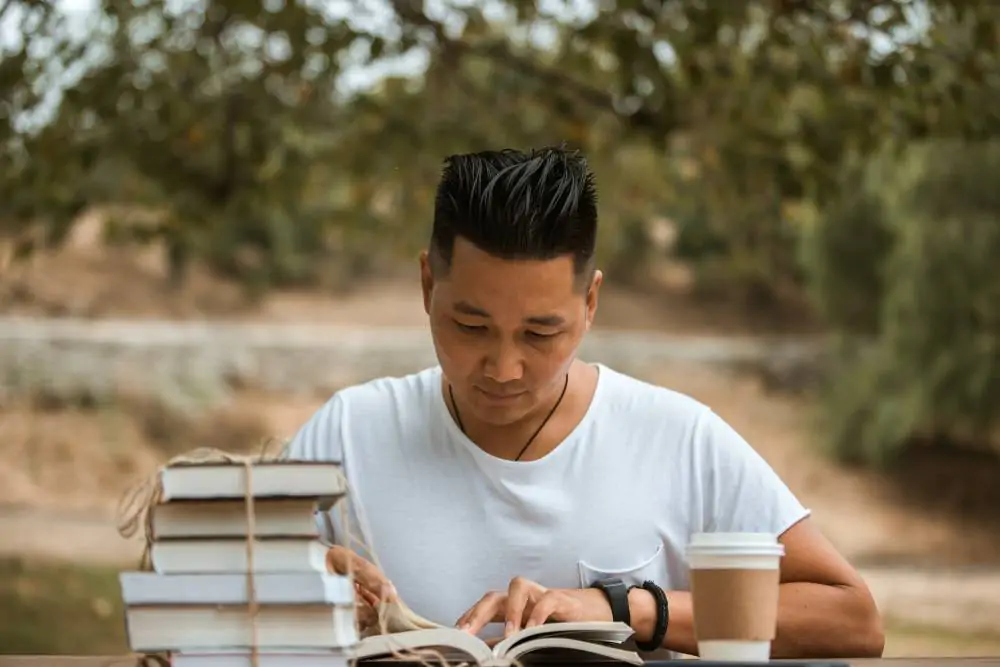
As mentioned above, life lessons are not only from experiences but also from reading. So for this prompt, pick up your favorite book and write down the lessons you learned from it. Next, identify each and explain to your readers why you think it’s essential to incorporate these lessons into real life. Finally, add how integrating these messages affected you.
There are always lessons we can derive from mistakes. However, not everyone understands these mistakes, so they keep doing them. Think of all your past mistakes and choose one that had the most significant negative impact on you and the people around you. Then, share with your readers what it is, its causes, and its effects. Finally, don’t forget to discuss what you gained from these faults and how you prevent yourself from doing them again.
Compile all the life lessons you’ve realized from different sources. They can be from your own experience, a relative’s, a movie, etc. Add why these lessons resonate with you. Be creative and use metaphors or add imaginary scenarios. Bear in mind that your essay should convey your message well.
Popular shows are an excellent medium for teaching life lessons to a broad audience. In your essay, pick a well-known work and reflect on it. For example, Euphoria is a TV series that created hubbub for its intrigue and sensitive themes. Dissect what life lessons one can retrieve from watching the show and relate them to personal encounters. You can also compile lessons from online posts and discussions.
If the subject of “life lessons” is too general for you, scope a more specific area, such as entrepreneurship. Which life lessons are critical for a person in business? To make your essay easier to digest, interview a successful business owner and ask about the life lessons they’ve accumulated before and while pursuing their goals.
Use this prompt to present the most important life lessons you’ve collected throughout your life. Then, share why you selected these lessons. For instance, you can choose “Live life as if it’s your last” and explain that you realized this life lesson after suddenly losing a loved one.
Have you ever met someone younger than you who taught you a life lesson? If so, in this prompt, tell your reader the whole story and what life lesson you discovered. Then, you can reverse it and write an incident where you give a good life lesson to someone older than you – say what it was and if that lesson helped them. Read our storytelling guide to upgrade your techniques.

Maria Caballero is a freelance writer who has been writing since high school. She believes that to be a writer doesn't only refer to excellent syntax and semantics but also knowing how to weave words together to communicate to any reader effectively.
View all posts

Some Lessons I’ve Learned From Reflecting On Life In 150 Essays
As I look back over my last 149 essays, I see memories, heartbreaks, and joys, all poured into my essays of size 12 font. I see times I was feeling high on life, and simultaneously, times I was struggling and felt as though I was stuck in the dark.. But even more than a simple timeline of moments and checkpoints, I see someone trying desperately to make sense of a messy world full of complicated emotions. I see someone a little bit lost at times, a little bit curious, and also a bit hopeful – someone just trying her best to seek meaning, inspiration, and above all, healing.
It is an understatement to say that writing has been therapeutic for me. When I have felt lonely, or afraid, or let down, I have often sought comfort in writing. Words have been magical – they have been a way to gain a new perspective on my life and on the lives of all of the people around me. Writing has unfailingly encouraged me to look twice at life – to examine what lies beneath the surface, rather than accepting things at face value.
And when I look back at all of these thoughts I have spilled across the white pages of my MacBook, I see many themes that seem to pop into my life over and over again, with each passing year. These themes are mainly lessons – those that I have learned, and those that I am still learning (or relearning). Looking over my writing, I can’t help but notice how as human beings, we are constantly learning. We never seem to stop changing, growing, or healing.
While I do not have all of the answers (or any answers with certainty), I do hope that some of the thoughts I have gathered and the lessons I have learned through examining the world through words may resonate with you as well. I hope they can bring you some comfort or reassurance in the midst of the mountains and valleys of your own life.
1. It can feel comforting to seek home in nostalgia – to live in our memories, to replay them over and over again, like little film strips that continue to roll on. But at some point, we have to remember that life is still happening and the earth is still spinning, right here, right now. At some point, we have to be here for ourselves and for our hearts in the present. We have to be brave enough to hope that the present and the future will be just as good, if not better, than the old memories we are living in.
2. I’m learning that joy doesn’t necessarily mean the absence of sadness, and grief doesn’t necessarily imply the absence of joy. Though we often want to choose an either o r, life is not quite as binary as we make it out to be.
3. I’m realizing that being at peace with life doesn’t mean that everything is perfect, or that we don’t have any troubles or tribulations or low energy nagging at our hearts. Being at peace doesn’t mean that life is wonderful, or that we aren’t stressed, or facing anxiety. More so, being at peace means finding some form of “okayness” amidst all of the parts of life that are not (yet) “okay.” It means sitting amidst the chaos and making the conscious decision to remain calm. To be okay. Ultimately, finding peace means acknowledging the storm and coexisting with it, rather than sitting in the eye of the tornado.
4. It’s the hardest lesson in the world, but sometimes, the best thing we can do is let them go. Sometimes we have to say goodbye to someone good and wait patiently for someone better.
5. Something odd about life is that the right choices don’t always feel right in our bodies. Sometimes, though difficult, we have to find the courage within us to pursue what we need, rather than what we want in the present. We have to take care of ourselves by honoring what we know is best for us in the long run. And oftentimes, in the present, it really does hurt a lot. The pain doesn’t mean the decision is wrong. Sometimes the best choices can leave us let down and hurt. But later on, we will be thankful.
6. I don’t believe that everything happens for a reason. I don’t believe in fate. But I do believe that we can give meaning to some of our hardest most heartbreaking moments. We don’t need to build an identity that is rooted in our grief or in our trauma or pain, but if or when we want to, we can allow the healing process to bring out our best. We can grow new, fresh roots, and we can choose to define ourselves by how we rise back up again.
7. We can’t expect others to heal us – no one can love us so much that we automatically love ourselves. But maybe, when someone does love us, they can remind us what love feels like. They can help us to believe that we are loveable. And this can be the first step of loving ourselves – knowing that we deserve to be loved.
8. Grief is ugly and painful and devastating. Grief is dark swollen eyes and tear-stained cheeks. Grief hurts. But we cannot deny the sheer beauty that grief holds. We cannot deny that grief is, in some ways, a gift. To grieve means that we are blessed enough to have loved and to have been loved by someone special – and this is remarkable. Grief means we are missing someone – someone who touched our lives in an irreplaceable way. And thus, I’d like to believe that the sadness and grief we endure when we lose someone close to us is simply the price we pay for loving them. And there’s something so dear and precious about this.
9. As hard as it is to hear, some people aren’t meant to stay in our lives forever. They are passerbys, like boats in the night. And though they may only stay for a short while, they stay safely in our hearts indefinitely. Temporary people can leave permanent footprints.
10. Anxiety and overthinking do not change the situation. They only turn a gentle rain shower into a hurricane.
11. We can miss someone, but we can’t lose ourselves when we lose them. We can miss them, but we can’t let our lives be over when they are gone. Because we still have our lives to live. And we still have so much love left in us to give. 12. We don’t need a reason to have hope – we don’t need evidence or logic, as much as we think we do. We don’t even need to fully understand or grasp what hope is. We just have to find it in our hearts to believe that hope exists. We have to bravely decide to give in to hope, even when we can’t see it or touch it – even when we don’t know if it is there. When life is dark, we have to believe that there is something still worth living for around the corner. And this belief – this hope – this is what will help us move forward.
13. It’s okay to find home in another person. It’s one of the sweetest, purest parts of life. But somewhere along the way, we must also find home within ourselves.
14. We know we are healing when we piece back together our broken parts and turn them into something greater than what we had before.
15. Perhaps, when someone doesn’t love us or doesn’t fight for us, it isn’t actually a reflection of us. Perhaps their inability to love us does not mean that we are unloveable, or hard to love. Maybe it means that they have been hurt one too many times before and that their walls are now built high of concrete and stone. Or maybe it means that they have been defeated by love one too many times – maybe love continues to let them down, time and time again. And maybe, even if they want to love us, they simply cannot. And we can keep trying and trying to knock down those walls. But perhaps when they don’t love us, the very best thing we can do is to hug them close, wish them the best, and then walk away. Because even if they were special, we each deserve someone who is ready to let us in fully.
16. Most of the time, when we think we need closure from someone else, what we truly need is closure from ourselves – permission from ourselves to let things be. To accept the ending and to understand that it’s time to let the ending stay an ending. We must find the strength to seek peace and healing on our own. Healing is our responsibility, not the responsibility of the person who hurt us.
17. Sometimes growth is quiet and subtle and doesn’t look like growth. Sometimes growth is simply viewing a situation from a fresh perspective. Sometimes growth is trying something new, despite whether or not it ends up being a good experience. Sometimes growth just means making it through each day and noticing one small good thing about the world each night. Some seasons are for making leaps and bounds, while others are simply for surviving and just being. Both seasons are important. Both are needed.
18. How do we know when we are healing? I think we know that we are coming close when we feel immense gratitude that something happened, rather than devastated by the fact that it ended.
19. We don’t always need to find the silver lining. Sometimes really crappy, awful things happen, and there is much more bad than good in the world. Sometimes we go through devastating, heartbreaking experiences that don’t have a silver lining, and the idea of trying to find one only hurts us further. In these really rough moments, we don’t need to search for the light. But maybe, when we are ready, we can remind ourselves that there is still light in the world. Maybe there’s no shining light in our situation, but there is still goodness somewhere out there. And hopefully knowing this will help us make it to the other side
Perhaps the secret isn’t avoiding pain or numbing ourselves from pain, but rather, putting our energy into cultivating joy and peace. Perhaps when we value joy over pain, life becomes a little bit easier.
Colleen George
“there can be magic in the messes” @apeaceofwerk
Keep up with Colleen on Instagram , Amazon and linktr.ee
More From Thought Catalog

9 Best Quotes From Sex and the City That Still Describe Modern Dating For Women Even Today

When Narcissists Say These 9 Phrases In Relationships, Here’s What They Really Mean

The 13 Best Romantic Comedies On Netflix In May 2024

6 of the Most Toxic Rom-Coms In Movie History (That Romanticize Red Flags)

The Best Romantic Comedy of 2023 Just Released On Netflix, And It’s Currently #1

Women Quit Dating, Sex, Marriage and Children With Men As 4B Movement Comes to The United States
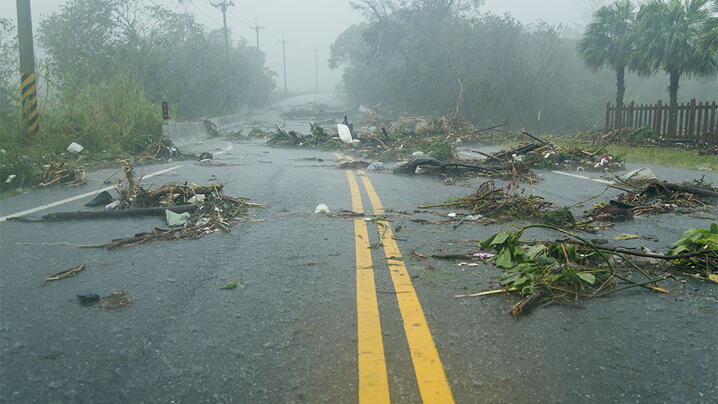
The retelling of stories of crisis management is a powerful tool for learning. When planning for the worst-case scenario, hearing from those who have lived through disaster can help to inform the decisions you make for your own preparedness.
One of the goals in producing the newest ICMA Leading Edge Research Report, " Leadership and Professional Local Government Managers: Before, During, and After a Crisis ," was to help city and county managers make informed choices about crisis mitigation and recovery based on the positive outcomes and challenging lessons learned by those who managed crises from hurricanes to mass shootings.
Author Ron Carlee explains best in his introduction to the report:
The lessons shared by managers...provide an opportunity to learn from a diverse group of dedicated professionals who have been tested. They spoke openly and honestly. They shared their stories in a sincere effort to help their colleagues, who may one day face an event similar to their event. They all demonstrated humility. They expressed admiration for the employees of their cities and appreciation for their peers who provided either direct aid or moral support. They represent the values of city management and show how managers can rise to the occasion when extraordinary events occur. Their work is inspiring.
Below are a few snapshots of lessons learned from city and county managers, whose interviews are featured in the Leading Edge Research report.
Leadership During a Crisis
"Everyone in the organization is going to look to you to see how rattled, nervous, unsettled you are during an event. No matter how rattled and unsettled you are, you need to be cognizant and manage it. If you’re going crazy and you’re showing a lot of emotions, that is going to start bleeding into everyone else. I tried to be as calm and as pragmatic as I could to create that kind of atmosphere in the EOC and with our staff so we could do our best work.” ~ Harold Dominguez, Longmont, Colorado
“There comes a time and place where you have to take a risk relative to your charge. You don’t have the answers—but you have to make the decision, for example, to spend money even though you don’t know if you have it or will be reimbursed. You must be focused on the mission and worry about the other stuff later.” ~ Dan Paranick, Ventura, California
Managing Oneself
"I worked for about 36 hours until the assistant city manager, whose home had been flooded, had the peace of mind to say that we should go on shifts. Police and fire had done so, but the others had to catch up.” ~ Rick Davis, Baytown, Texas
"I didn’t sleep for two days. I had nowhere to go, but I got a message delivered to the fire department for me saying ‘This is Christine, you don’t know me, I live at this address and I happen to be in Arizona. Please go use my house.’ I remember trudging up there in the pitch black. In a mountain town with no electricity, it is really black. I wore someone’s big ol’ muck boots and I found her house in the dark. She said where the key would be. I opened the house in the dark and laid down. That was after 48 hours and my head was swimming, just reeling. At that point you’re so psyched up, you can’t relax. It was still thundering and lightning. It was bizarre. It was different. I knew at that moment that I was exactly where I was supposed to be.” ~ Victoria Simonsen, Lyons, Colorado
On Managing Staff Well-being
"I was concerned for employees dealing with victims, listening to heart-wrenching stories, wanting to help, but often could only offer an empathetic ear.” ~ Jane Brautigam, Boulder, Colorado
"Before the flood, two teenagers were killed one weekend in our small town. It shook people up. And then there was the high school shooting in Santa Fe. We needed help coping with these events and the fire chief in Sugarland sent a team to help us.” ~ Sereniah Breland, Alvin, Texas
This month's Leading Edge Monthly video offers suggestions for leading out, within, down, and up during a crisis.
Want more stories of local government leaders overcoming crisis challenges? Download the Leading Edge Research Report!
Download Report
New, Reduced Membership Dues
A new, reduced dues rate is available for CAOs/ACAOs, along with additional discounts for those in smaller communities, has been implemented. Learn more and be sure to join or renew today!

COMMENTS
Don't be a helpless and vulnerable victim; be a triumphant and unyielding survivor. 10. It will always be Humanity against the World in the end. So we should all love and take care of each other regardless of faith, gender, race, social status, and even political views.
One thing we can do, says Riede, is to look at people's behavioural patterns during and after natural disasters. Historically, people tend to gather in small family groups and use their social networks to secure resources. Another typical reaction is to emigrate. A few hundred people that flee from flooded agricultural areas probably won't ...
Syria and Türkiye (Turkey). World Vision is a trusted global partner in responding to major earthquakes that claim the lives of hundreds or thousands, destroy infrastructure, and demolish homes. We grieve each time one occurs. But with each one, we learn more about the best ways to respond to this devastating force of nature.
Lessons learned here will help other parts of the world experiencing climate change. The Aral Sea was once the world's fourth largest lake, but 60 years ago, local industry diverted the rivers ...
Lessons learnt from these are then tested in subsequent crises and further data is collected. It is essential that the right lessons are learnt. In more recent years people who deliver disaster aid have begun to benefit from data driven decisionmaking, similar to commercial and military procedures. More people are vulnerable today.
Living Through Hurricane Maria: A Lesson in Resilience. English. Español. Release Date. May 1, 2018. Editor's Note: Hurricane Maria changed the lives of many when it hit Puerto Rico in September 2017. Four survivors, now FEMA local hires, share their stories on how Hurricane Maria impacted their lives, and how they are making a difference in ...
7. After Effects of Natural Disasters. Consider the short and long-term effects of these natural disasters. You can concentrate on a specific tragedy that the general public knows so your reader can easily imagine what you describe in your essay. To make your piece more interesting, you can list natural disasters' negative and positive ...
To my mind, the four of the most important lessons we have learned are: 1. The macroeconomic growth impacts of major weather disasters are negative, large, and persistent, but fiscal impacts can be mitigated through good policy. The IMF finds that severe weather-related disaster episodes cause a substantial economic growth decline and a ...
Because disasters have both immediate and long-term impacts, postdisaster studies should be conducted so that lessons can be learned at all phases. Much information on the immediate effects of disasters on people, buildings, personal property, lifelines, economic activities, and natural resources must be gathered within the first few hours to ...
One of the lessons they drew from looking at examples of disasters avoided is an understanding that disasters often result when people are forced to live and work in harm's way. Short-term ...
Lesson Evaluation. Students interpret and construct meaning from the photographs, song lyrics and life histories and apply the information by creating an original oral composition. They compare fictional and factual accounts of an event and learn independently as they research a natural disaster and its effects.
able to incorporate lessons from these early modifications into emergency plans. As the pandemic continues to evolve through new disaster seasons and threats, reviews1 are needed to assess past adjustments and apply lessons learned. The impacts of the pandemic have not been felt equally. Black, indigenous, and people of
500+ Words Essay on Natural Disasters. A Natural disaster is an unforeseen occurrence of an event that causes harm to society. There are many Natural disasters that damage the environment and the people living in it. Some of them are earthquakes, cyclones, floods, Tsunami, landslides, volcanic eruption, and avalanches.Spatial extent measures the degree or severity of the disaster.
Lesson #3: Small gestures have a huge impact on our well-being. This pandemic led to the best date of her life — a staircase apart. As the director of microbiology at a hospital in Rochester, New York, Roberto Vargas's job is to diagnose infectious disease.
Lessons Learned in Disaster and Emergency Response. When a major disaster or emergency strikes, having an up-to-date emergency management plan in place is vital to helping emergency responders act quickly and effectively. In support of this goal, and its overarching strategic plan, this week the United States Federal Emergency Management Agency ...
Mistreatment of Land, Natural Disaster, and Drought Created the Dust Bowl in America. Trial by Fire: a Natural Disaster's Impact on Attitudes toward the Government in Rural Russia. The Natural Disaster Of Hurricane Katrina. Tsunami: Science and True Natural Disaster. The Economic Damage Brought by Natural Disaster.
2.1 Learning from Past Disaster: A Logical Requirement Difcult to Represent To learn from the past supposes integrating the build-up of knowledge of past events as a basis for decision-making processes about building back better following the occurrence of a new disaster (Weichselgartner and Pigeon 2015). As such, lessons
As climate change drives increased intensity, duration and severity of weather-related events that can lead to natural disasters and mass casualties, innovative approaches are needed to develop climate-resilient healthcare systems that can deliver safe, quality healthcare under non-optimal conditions, especially in remote or underserved areas. Digital health technologies are touted as a ...
It is vital to learn about them. From wildfires in the US to locusts attack in India and back-to-back cyclones in India, there are many natural disasters in 2020. According to the Global Catastrophe Recap's First Half of 2020 report, there were more than 207 natural disasters in just the first six months of 2020, causing \ [$\]75 billion ...
3. The Life Lessons I've Learned. Compile all the life lessons you've realized from different sources. They can be from your own experience, a relative's, a movie, etc. Add why these lessons resonate with you. Be creative and use metaphors or add imaginary scenarios. Bear in mind that your essay should convey your message well. 4.
4. It's the hardest lesson in the world, but sometimes, the best thing we can do is let them go. Sometimes we have to say goodbye to someone good and wait patiently for someone better. 5. Something odd about life is that the right choices don't always feel right in our bodies.
Please go use my house.'. I remember trudging up there in the pitch black. In a mountain town with no electricity, it is really black. I wore someone's big ol' muck boots and I found her house in the dark. She said where the key would be. I opened the house in the dark and laid down.
The EOC is a designated location in a community where the response and recovery actions of a commu-nity or government can be coordinated during a disaster or other large-scale event. The EOC is the loca-tion for strategic, big-picture decisions, not a dispatch center for the tactical assets of response agencies.
3. We must learn the role of the state or government in humanitarian response. We must be aware of who we should talk to and where we should go to after and during the disaster to survive it. To know more about disaster response, read on the following: brainly.ph/question/5539697; brainly.ph/question/7132387; brainly.ph/question/4345816; #LetsStudy